Uncategorized
VR Fitness Is a Serious Workout, Seriously
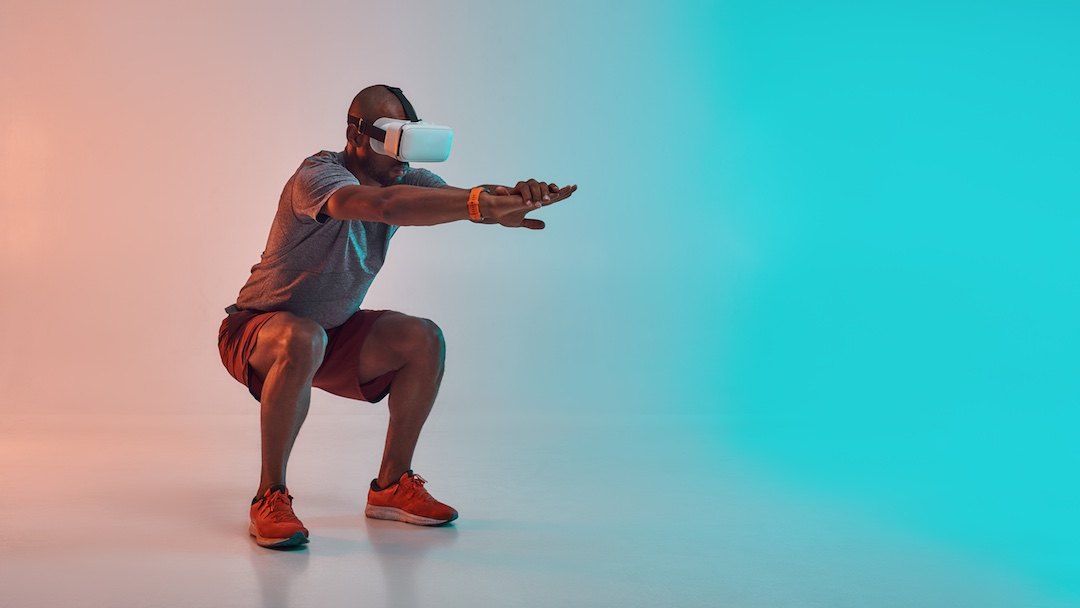
In the last days of 2020, Oculus quietly rolled out a fitness tracker, called Oculus Move, that lives inside its Quest headsets. Users who download the software can watch the calories they burn in virtual reality, along with their physically active minutes, climb on a ticker floating above or below their field of view. With a deeper dive into the tracker’s dashboard, they can also set goals and track their progress over time.
Move appears to be an acknowledgment from Oculus that fitness is a primary reason for many people to use VR. That’s certainly the case for me. I’m not much of a gamer in general, but for the past couple months, I’ve exercised nearly every day in virtual reality. And despite what you might think about the incompatibility of video games and exercise, these are serious workouts. Some end with me gasping for breath and wringing sweat from my beard.
In that sense, VR has saved me from bodily neglect. It’s helped me grasp the motivation that’s been threatening to slip through my fingers since the start of this godforsaken pandemic.
During the spring, summer, and fall seasons of COVID, I managed a couple 20-mile bike rides each week. On weekends I occasionally found strength for longer rides, and on one hot Saturday, I logged 100 flat miles on Long Island. But it was always a struggle to get moving, and as winter arrived in New York, my rides petered. After a couple inactive weeks, I decided to see what I could accomplish inside a Quest 2 ($299), the entry-level headset Oculus released in October.
Initially my plan was to use VR for a few minutes of movement on particularly cold days. But then I started building a library of games and programs, some of which I considered warm-ups that helped vault me into more serious cardio. Now, every day, I piece together a workout based on my mood and energy level. Video games are part of my daily routine, and I feel lazy without them.
What does a VR workout look like?
There are dozens of virtual reality programs you can use to burn a few calories, but as of now, there are only a few specifically focused on exercise. By far my favorite is the subscription-based program Supernatural ($19/month, or slightly less for annual memberships).
Workouts typically run 10- to 30-minutes, and they roll out fresh daily. After a quick stretch with a trainer, music kicks on and triangles and targets begin flying toward you. Your job is to squat through the former and smash the latter with the virtual batons in your hands.
It’s simple enough, but the game moves fast, especially with workouts labeled “hard.” You’ll struggle to hold a squat inside a triangle tunnel that forces you to stay low while swinging your arms. Then you’ll explode upward to swat an overhead target, side-lunge left then right to thread the off-kilter scalene triangles, and then attack a dozen more targets before dropping back down into a squat.
The movements burn, but they don’t immediately register as exercise. Not in the strictest sense, anyway, because Supernatural feels more like a sport than a workout. You run your score up by hitting targets, and with more powerful swings, you amass more points. You can track your progress on a leaderboard, and if you want to jump the person ahead of you, you’ll either have to work harder or longer.
To help break the monotony of exercise, each workout takes you around the world. You might start out on an arctic tundra, move to the edge of an Egyptian pyramid, and then end on the lip of a volcano in Ethiopia.
And each location pairs with a new song, which dictates the intensity of the workout. Supernatural invests heavily in licensing fees, and its programmers have delightfully diverse tastes. I’ve worked out to hip-hop, Southern rock, top 40. Some particularly motivating tracks have come from the New York Dolls, Violent Femmes, Kendrick Lamar, and one Skrillex track that threatened to detach my arms from my body.
The other program I use often is FitXR ($29.99), which fills my urge for head-to-head competition. With each workout, six other VR users join me. They appear as silhouettes to my left and right, and I do everything I can to make sure I score more points than they do.
FitXR workouts come with less novelty than Supernatural’s—there are only two environments, and the music isn’t anything I recognize. But it does offer workout variety, with either boxing or cardio dance classes. I prefer the former, which much like Supernatural, functions with moving targets set to the beat. Only this time, you’ll have to toggle between jabs, crosses, hooks, and uppercuts, depending on the target.
A streak counter tells you how many consecutive targets you’ve hit, and a power meter gives you a real-time score on each punch. Both metrics—accuracy and power—play into your position on the leaderboard.
The cumulative effect of scorekeeping and instant feedback available in both Supernatural and FitXR amount to what researchers call gamification. “You’re earning awards and leveling up,” says Tumay Tunur, Ph.D., a kinesiologist who studies virtual reality at California State University San Marcos. “It’s very rewarding, and it definitely helps with adherence.”
Consistency, says Tunur, is the most critical component of any workout routine. And that’s what makes gamification potent: It gives you goals that numb the pain, and it keeps you coming back for more.
Tunur’s VR fitness game of choice is the rhythm-based Beat Saber ($29). “When I play, I’ll say, ‘I’m gonna go in for 20 minutes to get a quick workout,’” she says. “Then 40 minutes later, I’m still playing.”
I can relate. When I’m feeling lethargic, I delay my serious workout by playing a first-person shooter like Pistol Whip ($24.99) or scaling cliffs in The Climb ($29.99). Both games get my blood pumping, and after a couple rounds, I’m eager to log in to Supernatural or FitXR.
According to Oculus Move, the built-in tracker, I’m burning 200-400 calories per workout, and in one 49-minute session, I clocked 549. I suspect the numbers are inflated, however. I’ve worn both Garmin and Fitbit trackers during my VR workouts, and they registered 24 percent and 35 percent lower, respectively.
But I don’t particularly care about calories. The more important metric for me is exertion, and the trackers told me I was keeping my average heart rate close to 130, with a peak near 170. Those are legitimate numbers, and they provide context for research on VR fitness.
Last year, kinesiologists at the University of Minnesota reviewed 15 studies on the subject. Among those that looked at physical outcomes such as body composition, fitness level, and muscular strength, two-thirds showed positive results from VR workouts. And that’s despite relatively short study periods and outdated technology. (The oldest study in the analysis is from 2003, which is ancient in tech years.)
But perhaps the more interesting finding comes from the studies that looked at VR’s psychological effects. According to the research, virtual workouts can reduce fatigue and symptoms of depression.
Again, I can relate. Virtual reality isn’t reality, but it does transport me somewhere outside my apartment. That’s valuable given that my local restaurants, bars, and gyms are all inaccessible due to the pandemic. VR is a small bright spot—a healthy one, at that—in what could otherwise feel like a yearlong, pandemic-induced Groundhog Day.
5 Boxing Workouts That’ll Get You in Fighting Shape
Brute strength, rapid-fast reflexes, and superhuman endurance are achievable—if you put in the work.
Virtual workouts and the future
If you’ve been paying attention to VR, then you’ve been hearing for a decade that Oculus was on the verge of making the technology mainstream. So what’s different about now? That’s easy: Accessibility.
Until recently, affordable consoles were just plastic or cardboard holsters that strapped a smartphone to your head. There wasn’t much you could do with them. And even today, high-end goggles require cables to keep you tethered to an expensive gaming computer.
The Oculus Quest, released in 2019, was the first to bridge the divide. It was wireless and had a $399 price tag. It wasn’t cheap, but it wasn’t four-figures expensive, either. And 17 months later, Oculus released the Quest 2, an update that improved significantly on the visuals (frame rate and resolution are both higher), weight (it clocks in at just over one pound), and price ($299). It stands to reason that as the technology continues to improve, so will the fitness applications.
My one overarching complaint of the Quest 2 comes not from Oculus, but from its parent company, Facebook. With the second-generation console, the social-media company began requiring its virtual-reality users to log in using a Facebook profile.
That probably won’t phase the site’s billions of active users, but I deleted my account a couple years ago. Facebook found a way to force me back on, and the strong-arm mandate confirms my suspicion that it cares more about harvesting my data than winning me back as a loyal customer.
Regardless, VR fitness has officially landed, and I’d wager that goggles will soon be as common as treadmills.
Consider Holodia, a company that began making VR workout software in 2018. Originally, Holodia targeted gyms with virtual jungles and rivers that members could accelerate through using rowing machines, ellipticals, and exercise bikes. But in January, Holodia launched a subscription-based program for the Quest 2, presumably to jump on the at-home VR fitness trend.
Users can run the program, called Holofit ($10.75/month, less for longer memberships), using smart rowing machines or bikes and ellipticals with cadence sensors attached. But more tellingly, they can now also run it by doing crunches or jogging in place—no heavy equipment required.
That seems to provide a clue to where VR fitness is headed. While it began as a novelty, it’s now capable of serving as the centerpiece to your home gym. It costs less, takes up less space, and incentives you with game-like elements and daily updates.
Truth is, I don’t always feel like working out. But these days, I’m always down for a break from reality. It’s wonderful that VR can offer both.
This content was originally published here.
Uncategorized
95 Funny Kids Who Make No Sense
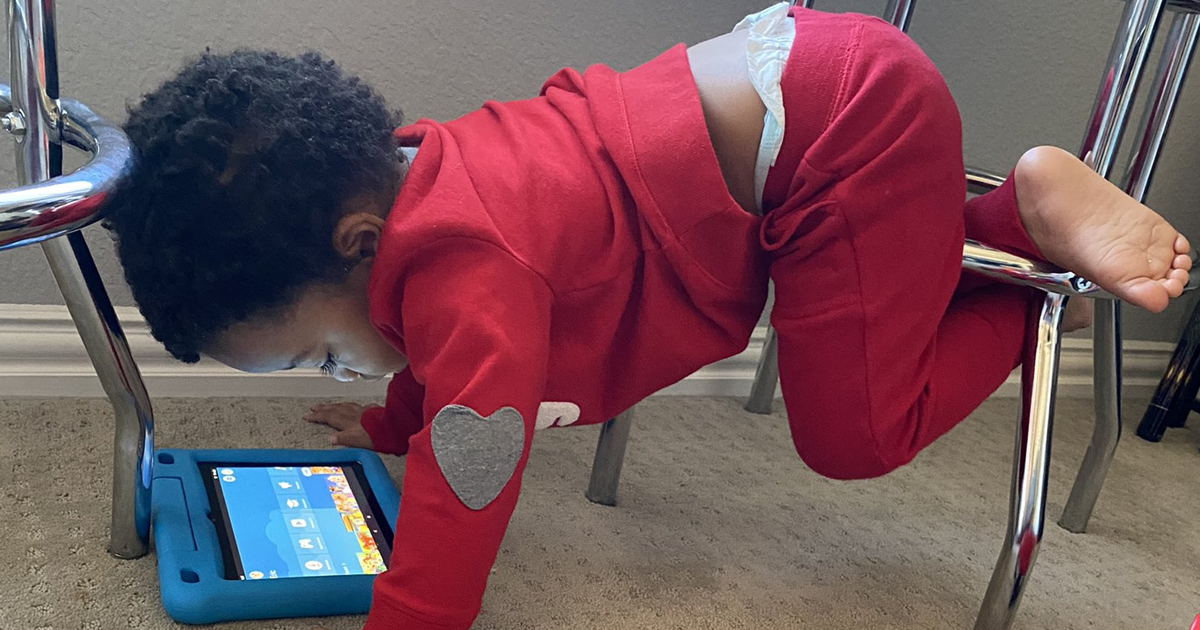
It’s a universal truth, kids do the craziest things—all of the time. Not only that but when you ask them why they thought that putting cheese between their toes was a good idea, they’ll just shrug and say, “I don’t know.”
It takes a while before children get old enough to not try everything that crosses their mind. And before that happens, parents make sure they take pictures of their shenanigans. Otherwise, why would people believe they used to trim their nails so that they would look like finger crowns?
Luckily for us, some moms and dads share these “kids make no sense” photos on the Internet too. So sit back, relax (you won’t have to clean up the mess), and enjoy this exclusive compilation of malfunctioning kids by Bored Panda!
#1 My Mom Said This Was One Of My Favorite Things To Do As A Child

Image credits: gronkaflomarous
#2 Asked My Sister If My Nephew Was Enjoying The Wedding. This Is The Picture She Sent Back

Image credits: caityfaced88
#3 Walked In On My Son Watching TV Like This. Freaked Me Out For A Second
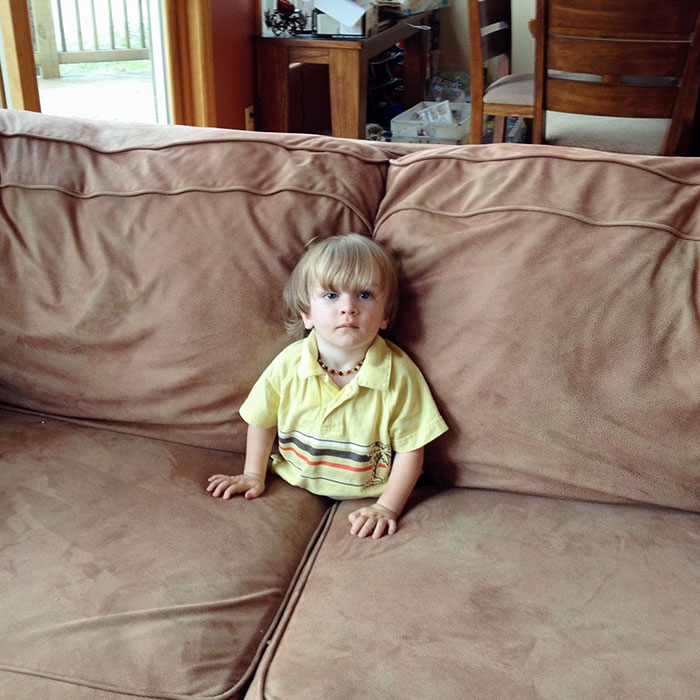
Image credits: mc_dad
#4 “He’s Upset His Gloves Match His Jacket”

Image credits:
#5 My 4-Year-Old Daughter Was Watching Something On Her Tablet That Scared Her. So She Came Back With Protective Headgear

Image credits: Russell0812
#6 Hmm, That’s A Worry

Image credits:
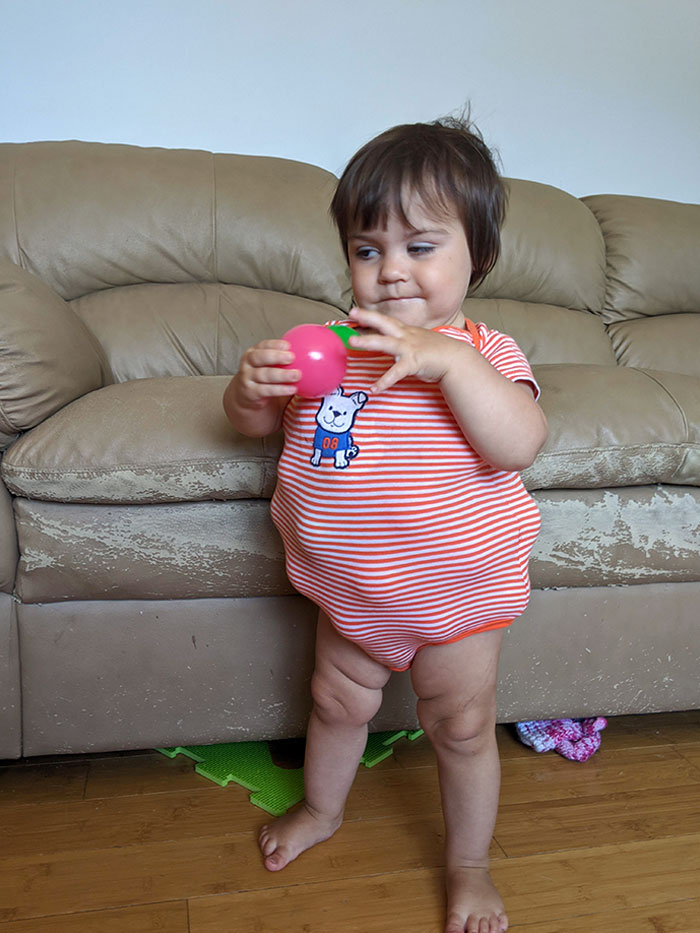
Image credits: MokeOG
#8 Pants

Image credits:
#9 This Is How My Son Was Sleeping. He May Be Immortal

Image credits: Backpacks_Got_Jets
#10 My 2-Year-Old Cousin Is Genuinely In Love With Her Skeleton
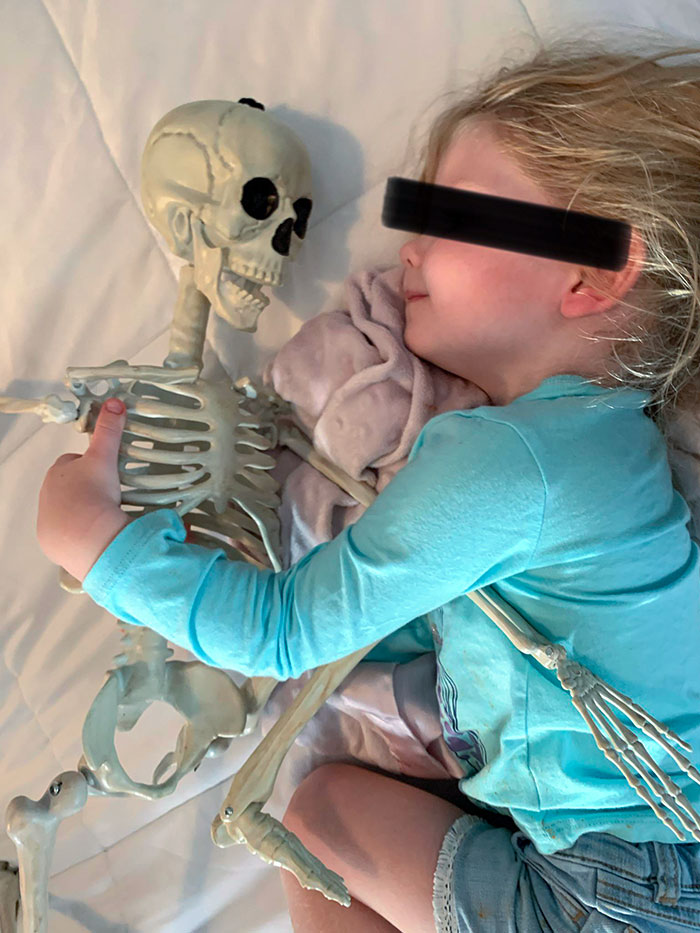
Image credits: dancingdandydaisies
#11 We Have 6 Beds And My Kids Still Sleep Like The Grandparents From Charlie And The Chocolate Factory Every Night
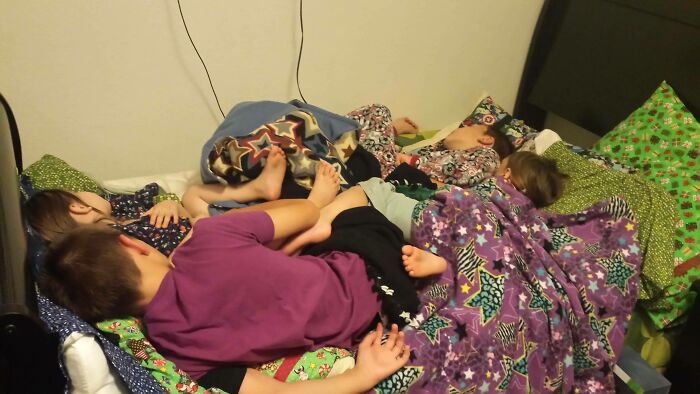
Image credits: killercherry99
#12 My Two Kids Sitting Next To The Brand-New Couch My Wife Ordered Them
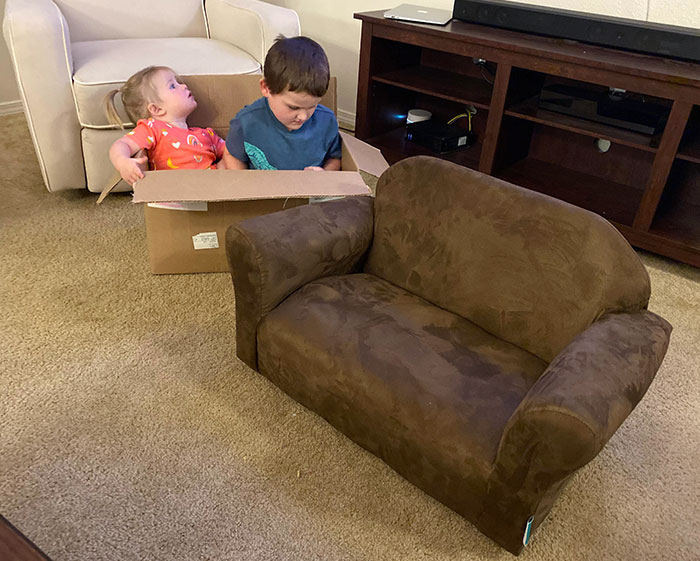
Image credits: AlexanderAF
#13 Why Go To Playground, When You Can Have Your Own Personal Customized Brother-Swing

Image credits:
#14 Imagination Level 100. My 2-Year-Old Daughter Drew A Pillow With Chalk, Then Laid Down For A Nap
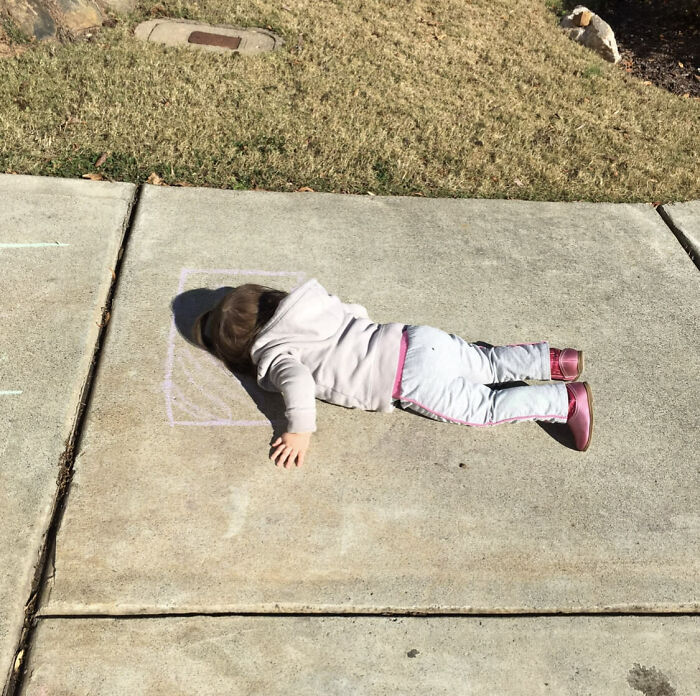
Image credits: mpbishop
#15 Wife And I Went Out One Night And Came Home To My Son Sleeping Like This
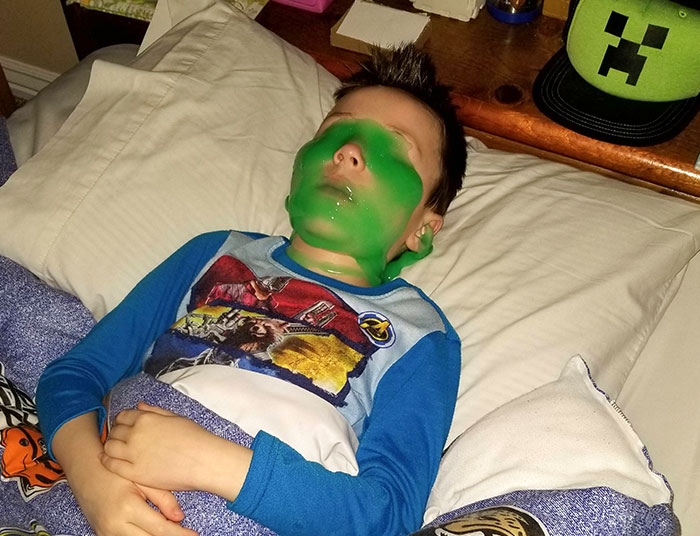
Image credits: paqmanbiker
#16 My Brother Has Discovered That His Swim Shirt Holds Air
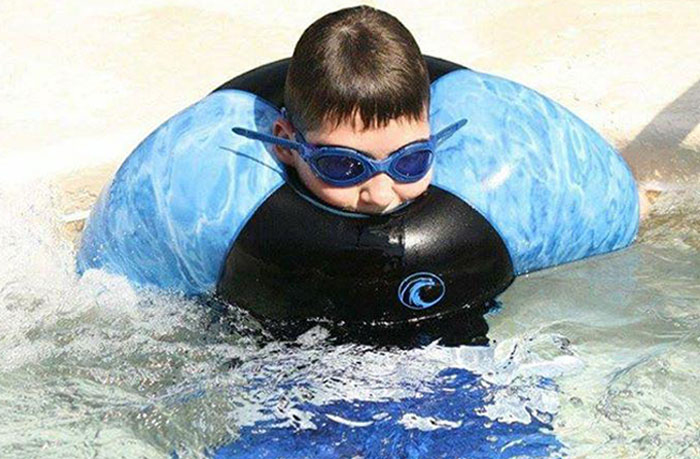
Image credits: OrdinaryRedditor2
#17 Instead Of Just Letting Us Know Verbally She Woke Up From Her Nap, Or Opening Up The Cracked Door, She Thought She Needed To Wave At Us From Under The Door Until She Got Our Attention
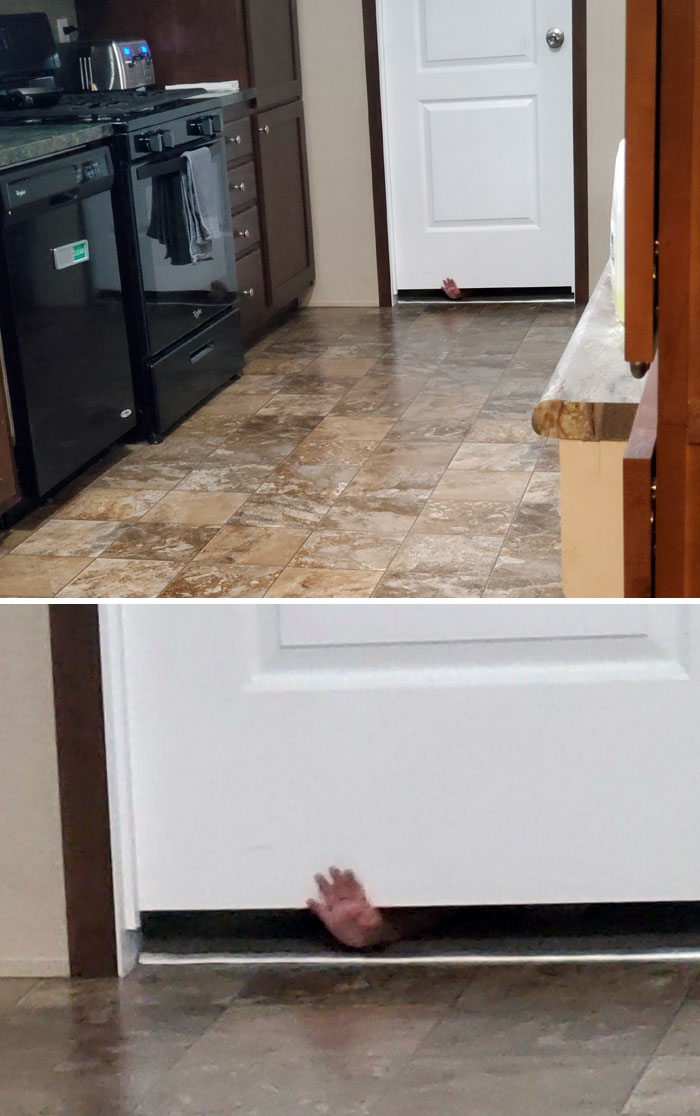
Image credits: kaitykat19
#18 This Is How My 2.5-Year-Old Niece Insists On Holding Her New Baby Brother

Image credits: thisismyfupa
#19 He Looks Comfortable

Image credits:
#20 Tablet Computer Yoga
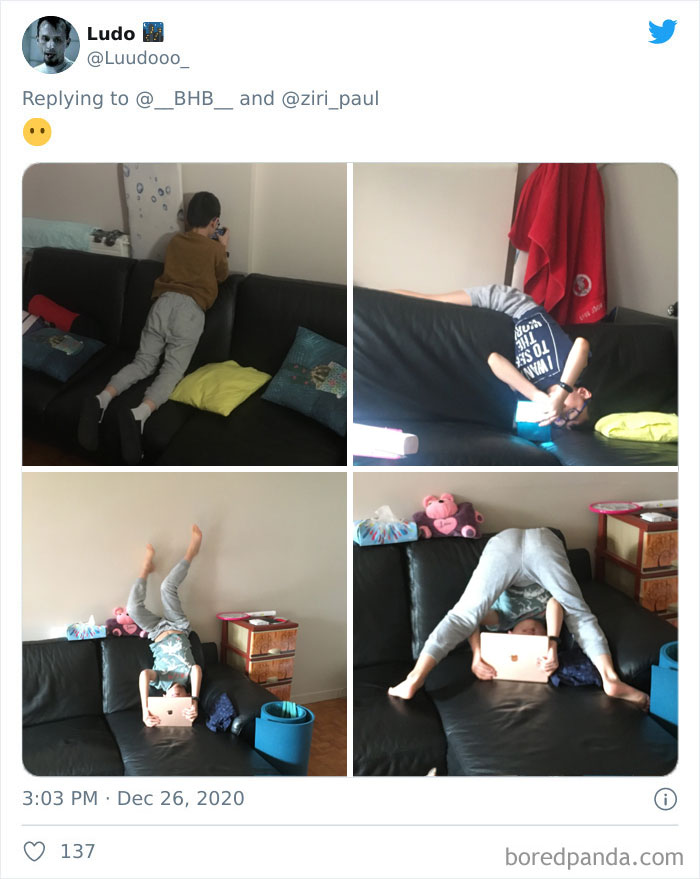
Image credits:
#21 Not Sure If I Should Be Proud Or Concerned. My Daughter Said “He’s Got The Rona!” And Started Making Him A Coffin
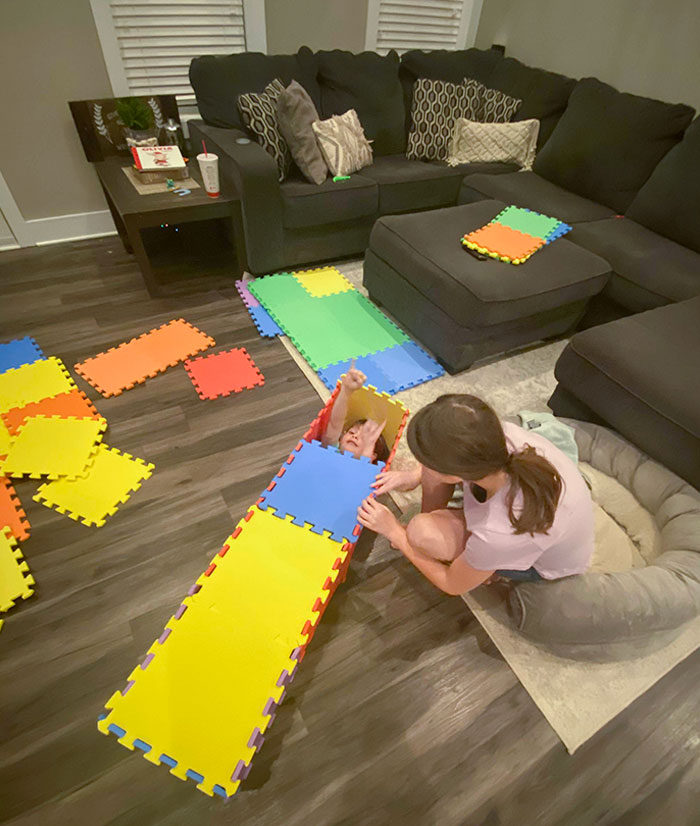
Image credits: alxrite
#22 Lost My Kid In Target. Found Him Here
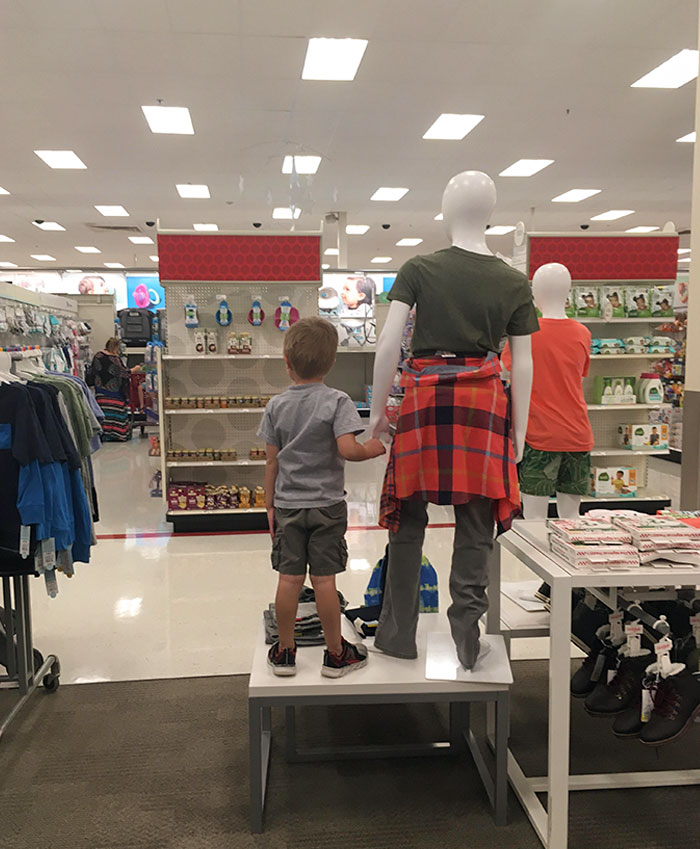
Image credits: cassper1
#23 Little Cousin’s Prompt Was, “What Place Do You Want To Go And Visit? It Can Be Anywhere In The World”

Image credits: garbich
#24 Was Looking Through My Fourth Grade Yearbook And Found This

Image credits: Sip_the_bleach
#25 Honest Card

Image credits:
#26 Pool vs. Paint Bucket
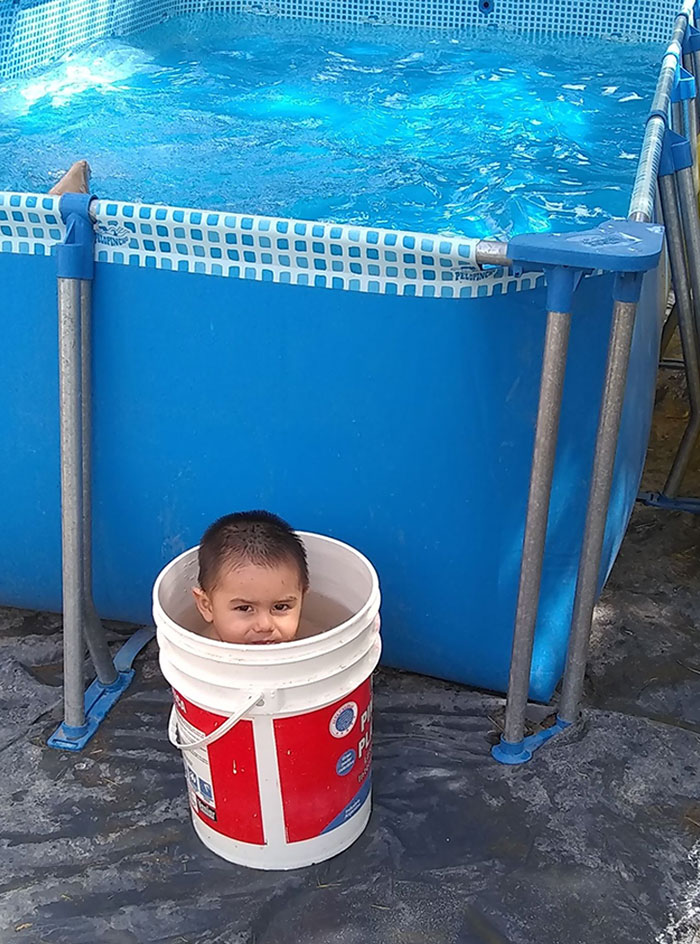
Image credits:
#27 Took My Daughter Out For A Nice Dinner

Image credits: thegreatbarcia
#28 Introducing My Middle Child (Please Note The 3 Other Children Playing Normally In The Distance). She Found A Dead Squirrel And Was Super Excited

Image credits: dawndollygolden
#29 Daughter Wanted A Barbie Centaur. Introducing Barbitaur
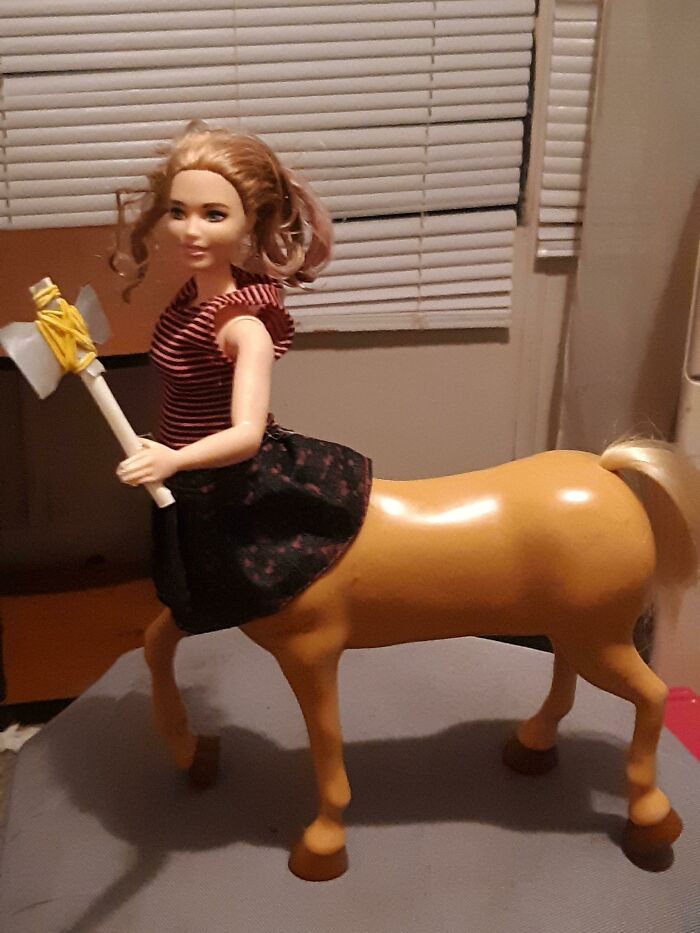
Image credits: pooper1978
#30 Turn Your Back For 30 Seconds
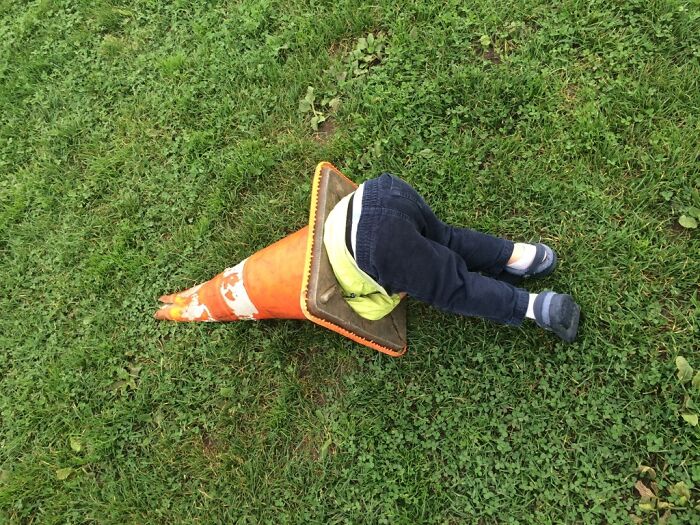
Image credits: looseleaflover
#31 Kid At Walmart Dragging His Head On The Ground While Mom Was Shopping

Image credits: spooky-mcgriddles
#32 My Daughter Always Steals Printer Paper To Draw On So For Christmas I Wrapped A Pack Of 500 Pages Of Paper. She Started Running Around Screaming With Excitement
Easiest present ever.

Image credits: imod3
#33 Went To Check On My Daughter
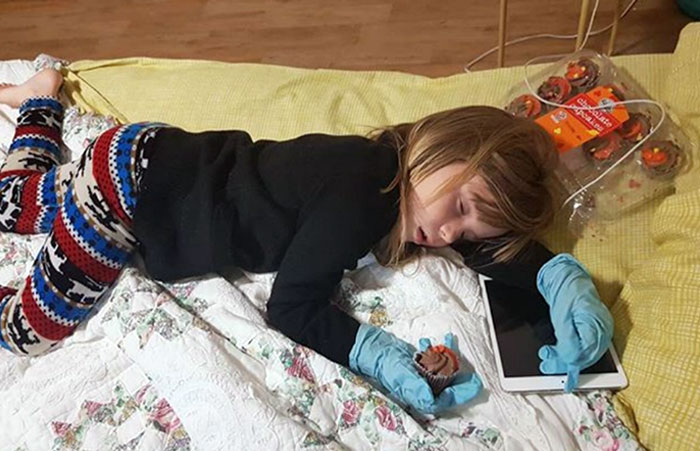
Image credits: spanishcastle12
#34 I Was An Interesting Child
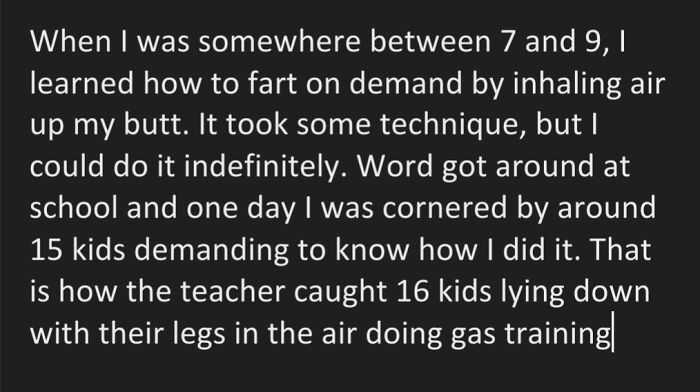
Image credits: jrobbio
#35 My Daughters Wanted To Play With Chalk Outside. I Came Out To Them Setting Up A Fake Crime Scene
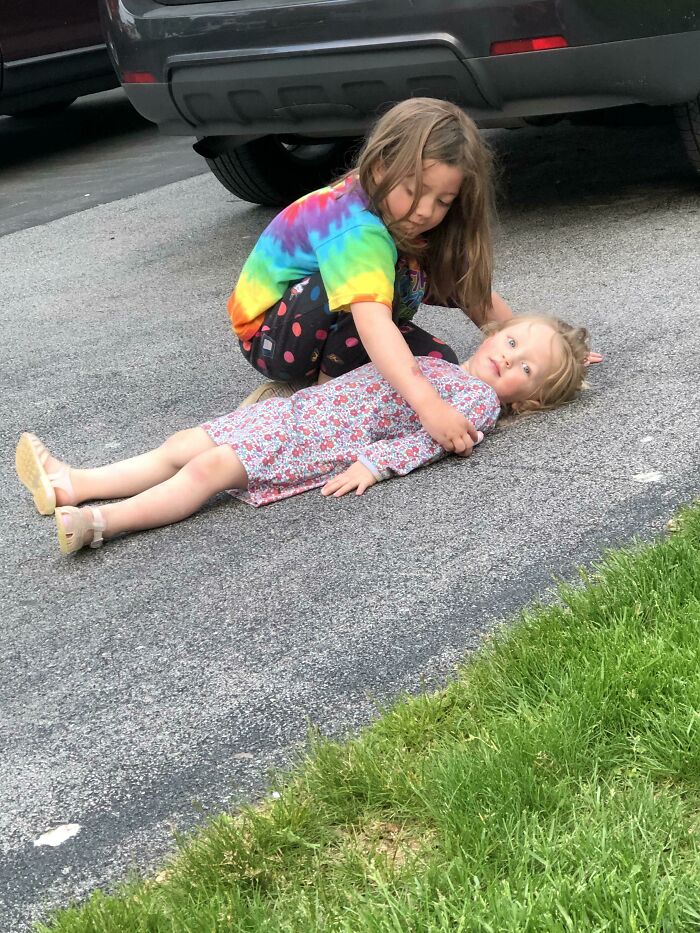
Image credits: kekembas17
#36 We Caught My Girlfriend’s Niece Doing This At The Mall
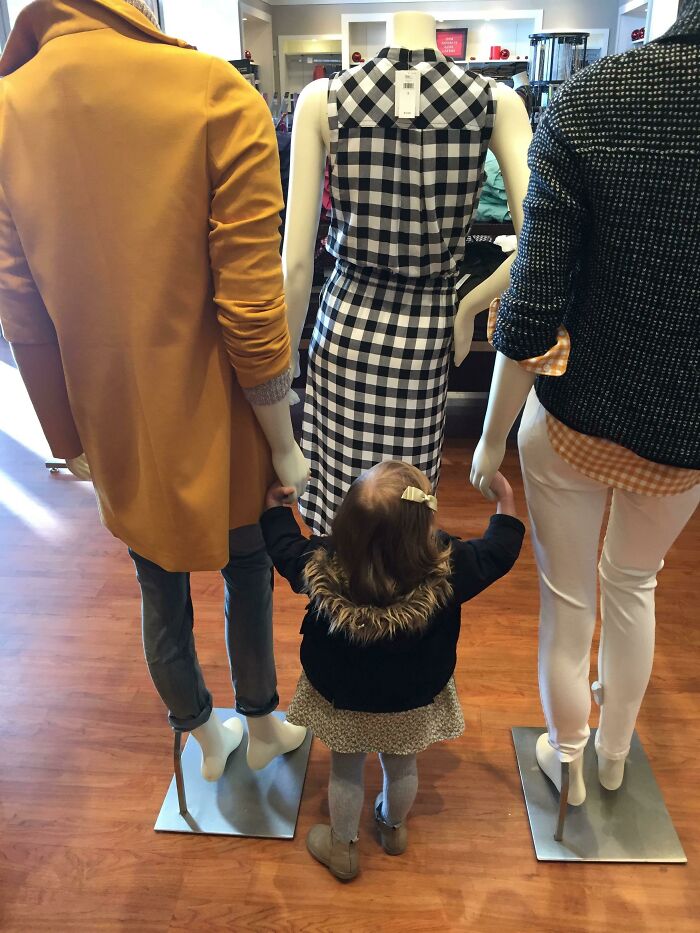
Image credits: Codybrown23
#37 My Little Brother Eats A Burger Layer By Layer

Image credits: THEFATCAT78600
#38 My Friend Is Potty Training Her Kid. This Is How She Poops When She’s Cold

Image credits: kopo27
#39 My 3.5-Year-Old Niece Thinks She’s A Ninja

Image credits: zimu273
#40 My Daughter Thinks The Closet Looks Less Creepy At Night Like This. That Makes One Of Us
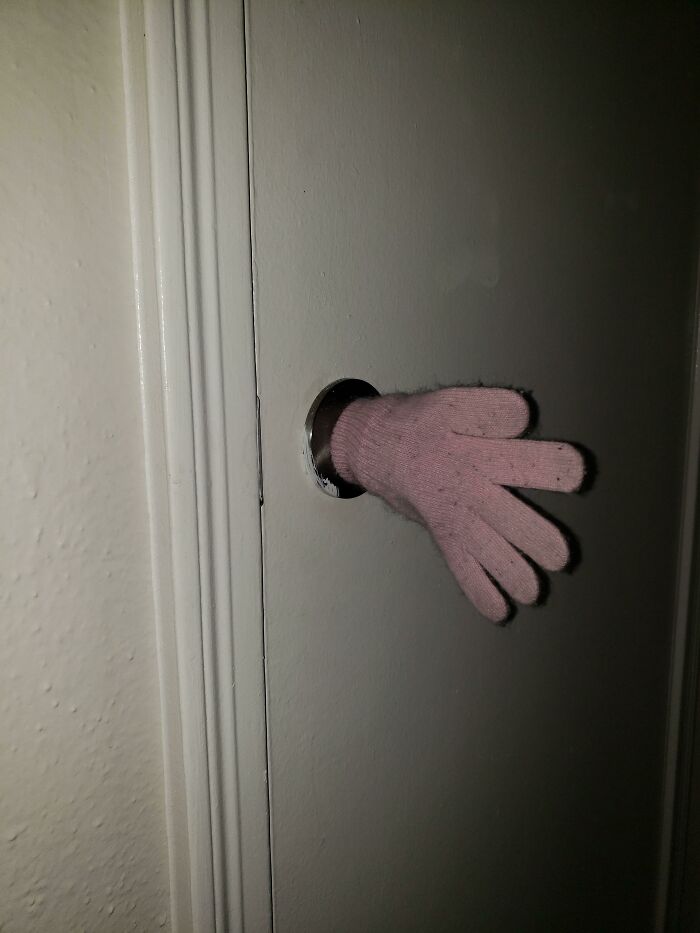
Image credits: bunnycat77
#41 My Niece. My Spirit Animal

Image credits: RobotThoughts
#42 Trying On Clothes With A Toddler In A Nutshell

Image credits: nikkicolerose
#43 My Kid Sleeps Like He Fell Down In Family Guy

Image credits: AirmanAJK
#44 Spider-Men Sleepover
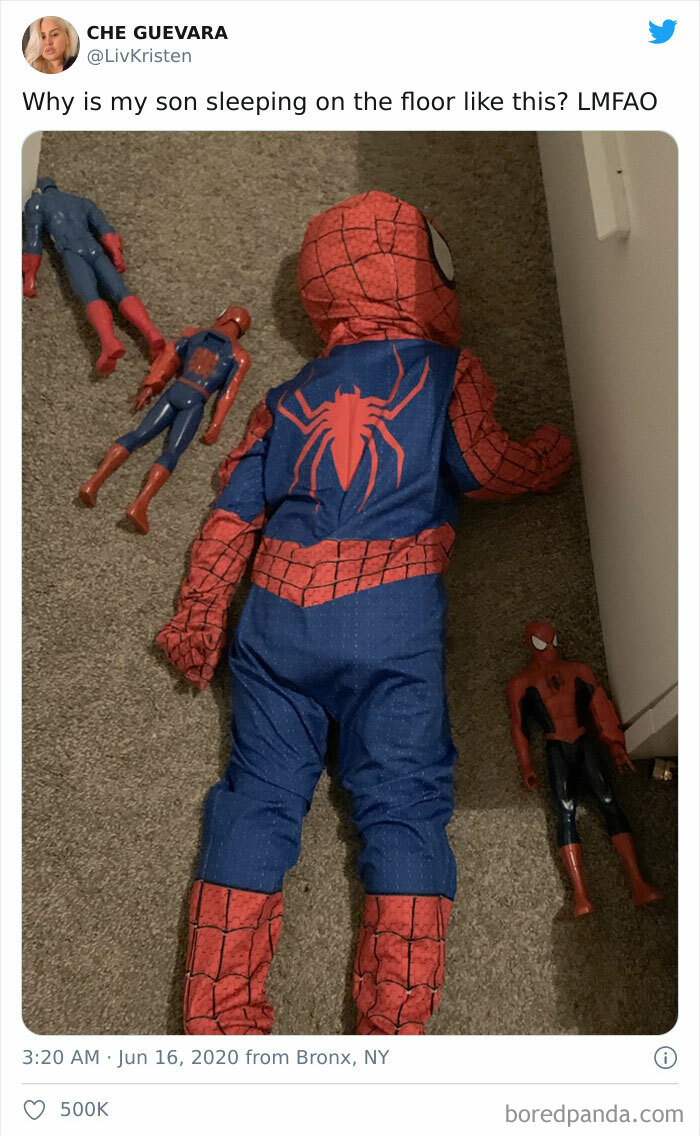
Image credits:
#45 Ah, Siblings

Image credits: Texas_Tusks
#46 My Son Watching TV This Morning
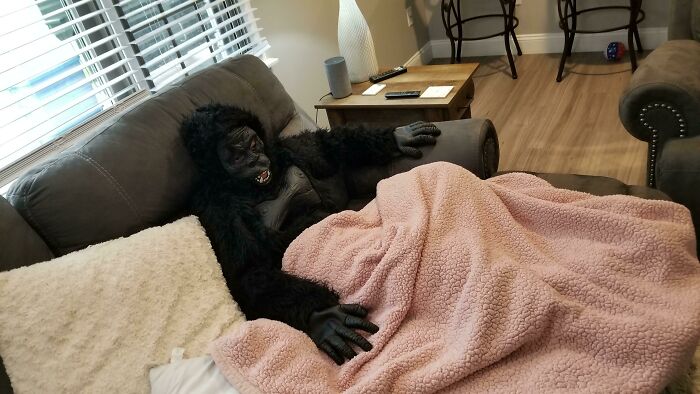
Image credits: heyheyhey12_12
#47 My Son Found A Piece Of Brick Outside And Put It In A Ziplock Bag For Safe Keeping And Brought It Inside
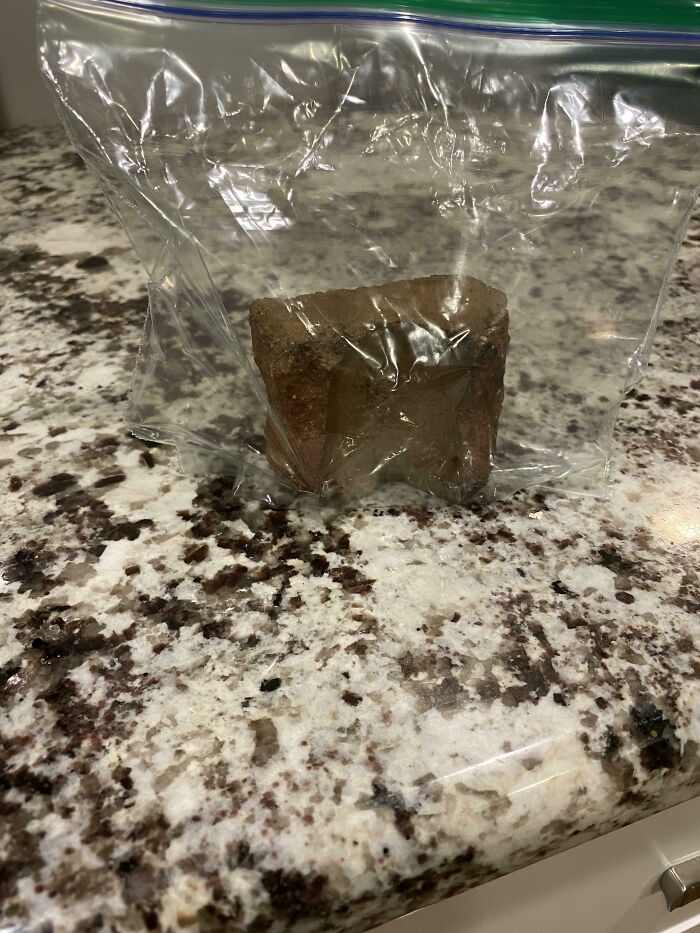
Image credits: PhnxDarkDirk
#48 My Daughter Now Has A Special Book, Carries It Around Everywhere And Uses It For Everything. It Is The Official Mr. Boston Guide To Bartending And Drink Mixing
The other day she snuck it into the car and tried to take it to daycare. She asks to sleep with it, as if it’s a stuffy.

Image credits: Dwingp
#49 Checked On My Daughter To See How School Was Going. Now Waiting For The Teachers Email. What’s With The Bat?

Image credits: VinTheButcher
#50 This Kid Eats Onions Like They’re Apples

Image credits: sitawhitty
#51 My Son Didn’t Want To Be A Tiger Or A Superhero, He Wanted To Be A Traffic Light
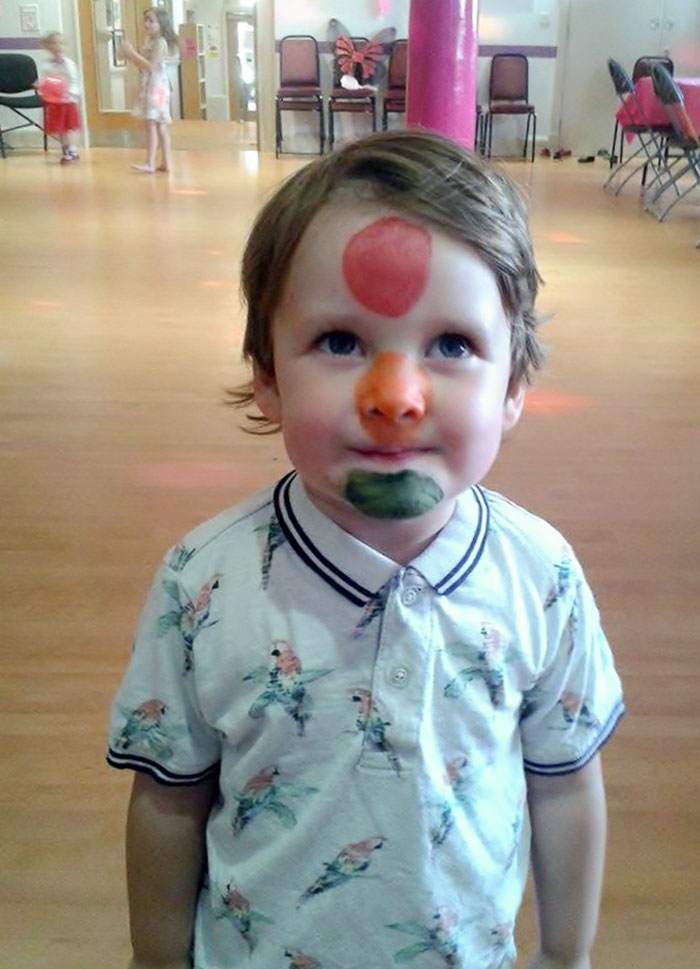
Image credits: oimky
#52 By Special Request. I’ve Also Packed Her The Apple Peel
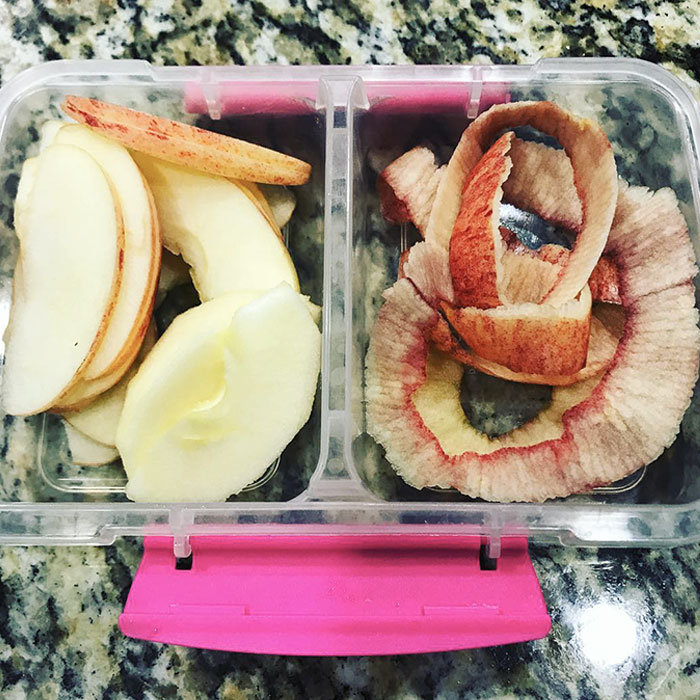
Image credits: giftsfromthelittles
#53 Keeping His Back Stretched. What A Healthy TV Watcher
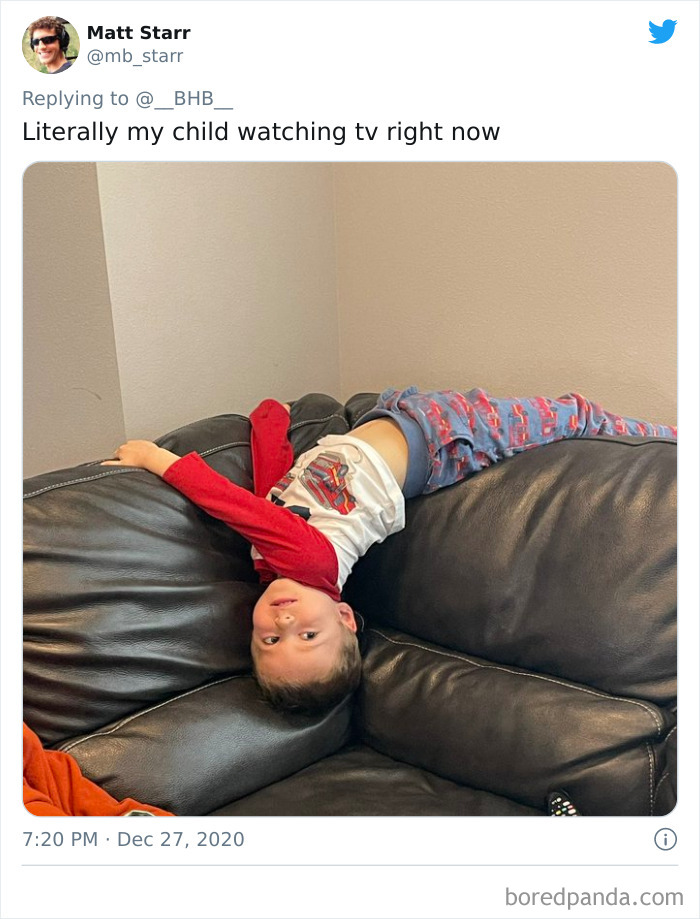
Image credits:
#54 He’s Only 1
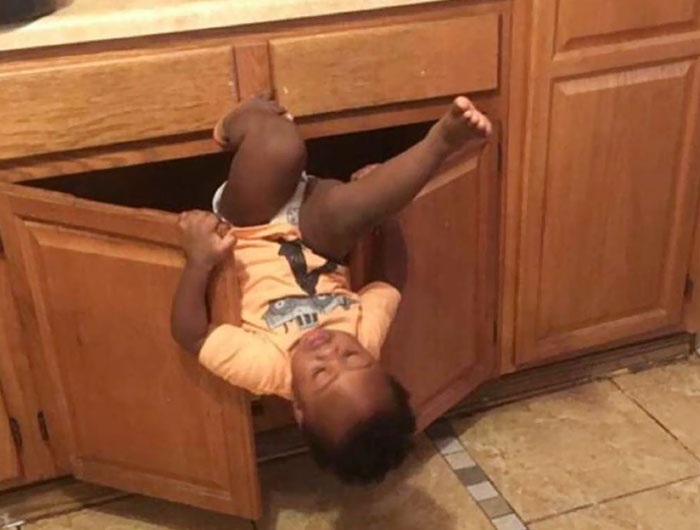
Image credits:
#55 My 2-Year-Old Daughter Was Pretty Hungry

Image credits: Olywa1280
#56 “Necessities” For International Travel According To A Five-Year-Old
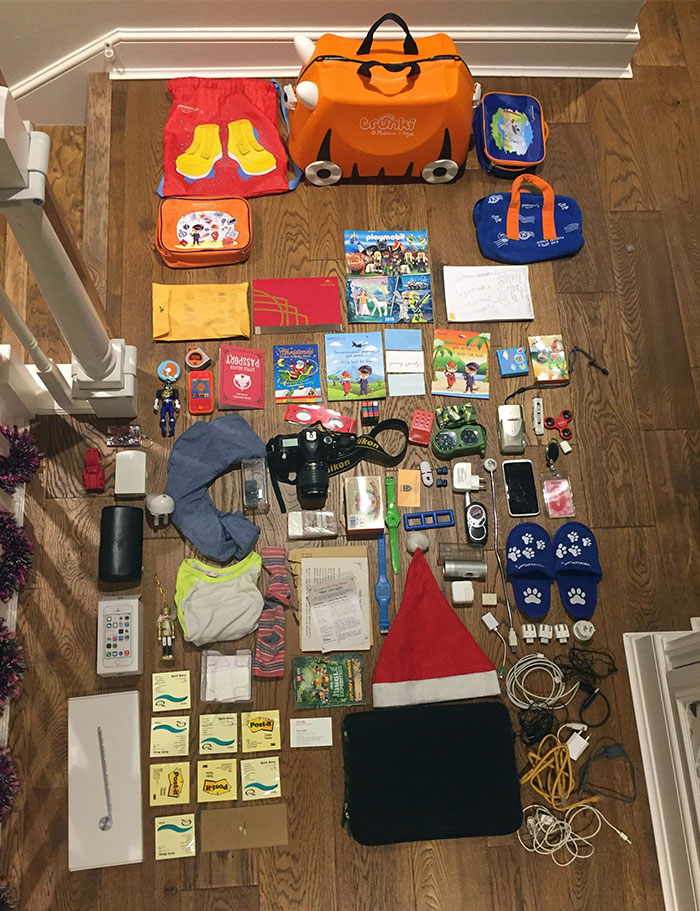
Image credits: dhant122
#57 The Way My Brother Likes To Watch Youtube
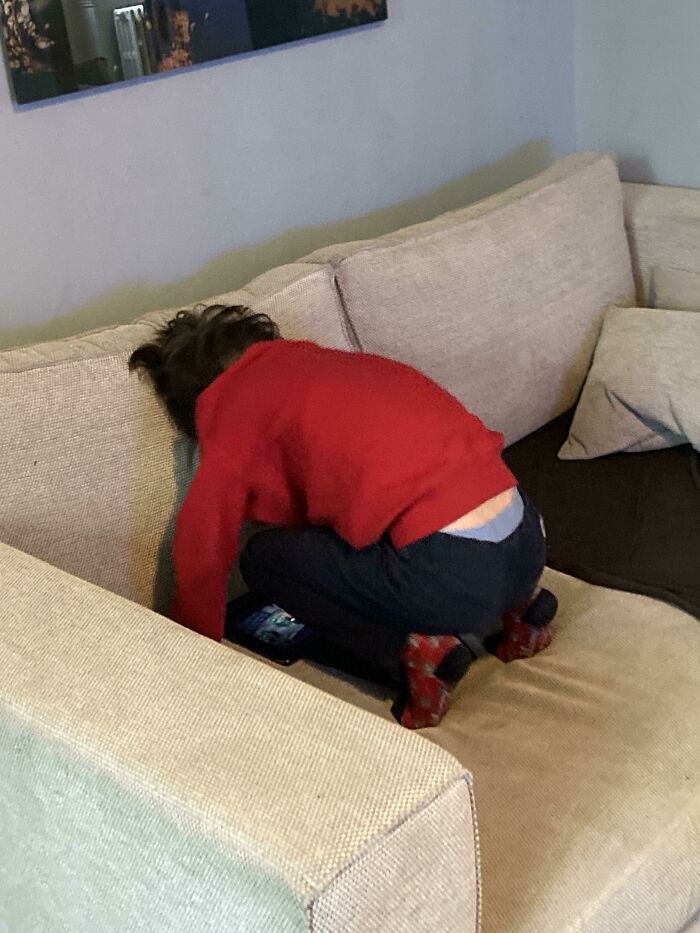
Image credits: Sad_Fly834
#58 It Was Too Quiet Upstairs. This Is How We Found Her

Image credits: AcriDice
#59 If Only I Could Sleep Like This Kid
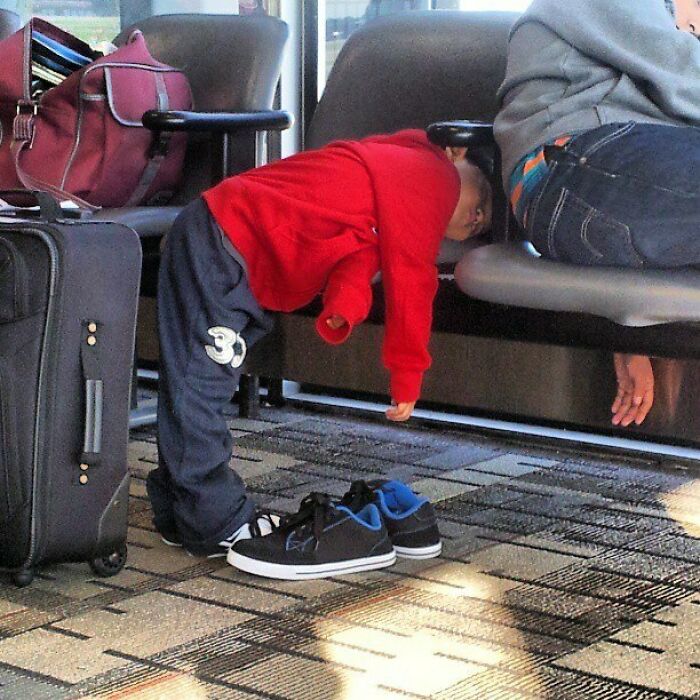
Image credits: kongaman
#60 To Avoid Perpetuating Gender Stereotypes, I Gave My Daughter A Mix Of Dolls And Toy Cars To Play With. This Is What Happened
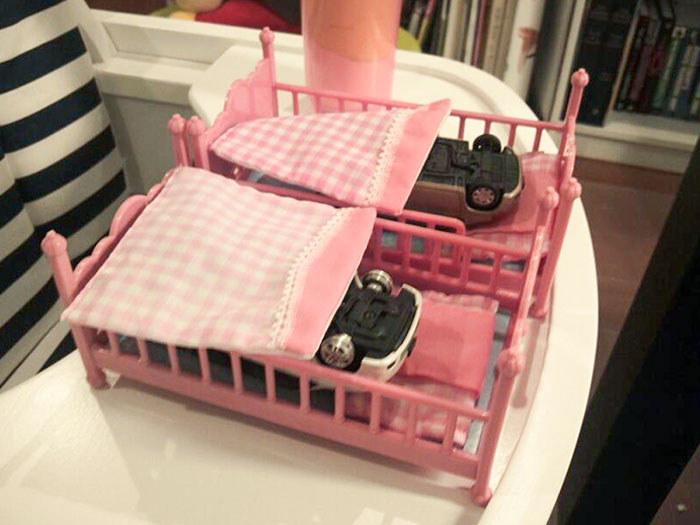
Image credits: ju2tin
#61 Heard My Son Making Weird Cat Noises. Found Him This Way
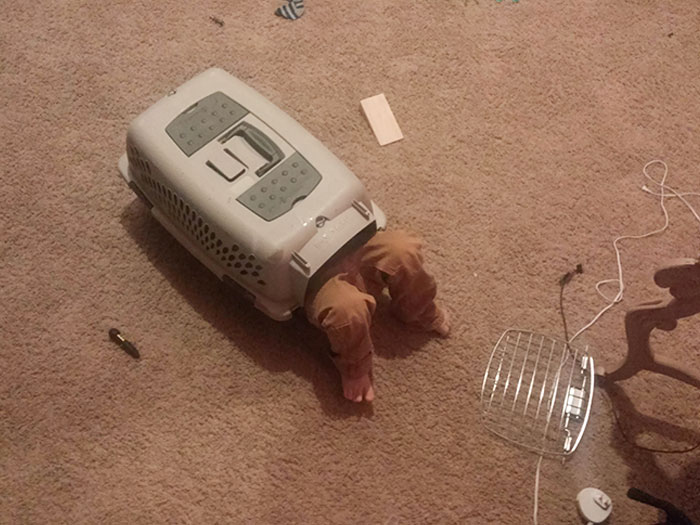
Image credits: blr6183
#62 I Was Going Through An Old Family Photo Album, I Found A Picture Of Me When I Was 9

Image credits: couldnt_help_myself
#63 Found This While Looking Through Old Pics. I Was A Weird Kid
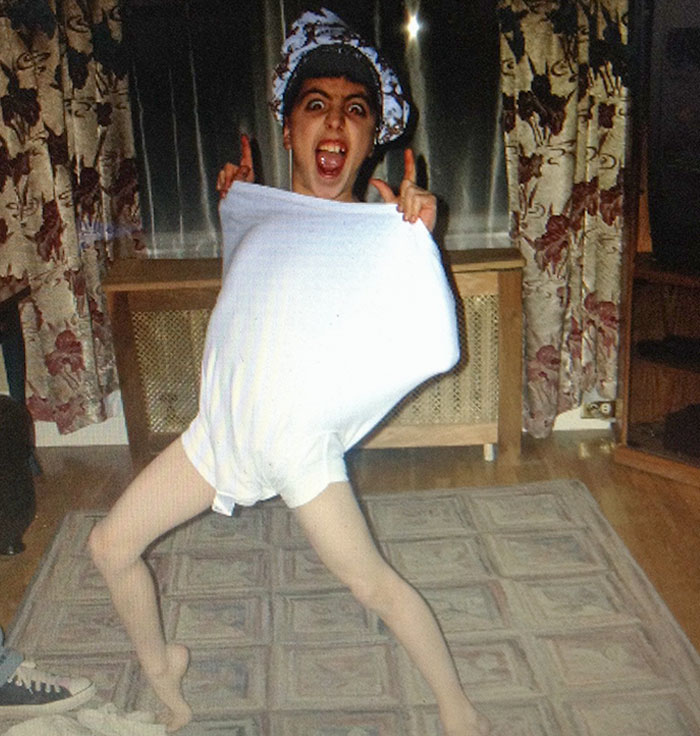
Image credits: yz125
#64 My Brother “Laying On The Bed”

Image credits: Handsome_Wanker_
#65 No, You’re Not Dead, Mickey Is

Image credits:
#66 Yes, She Put Cheese In Her Toes
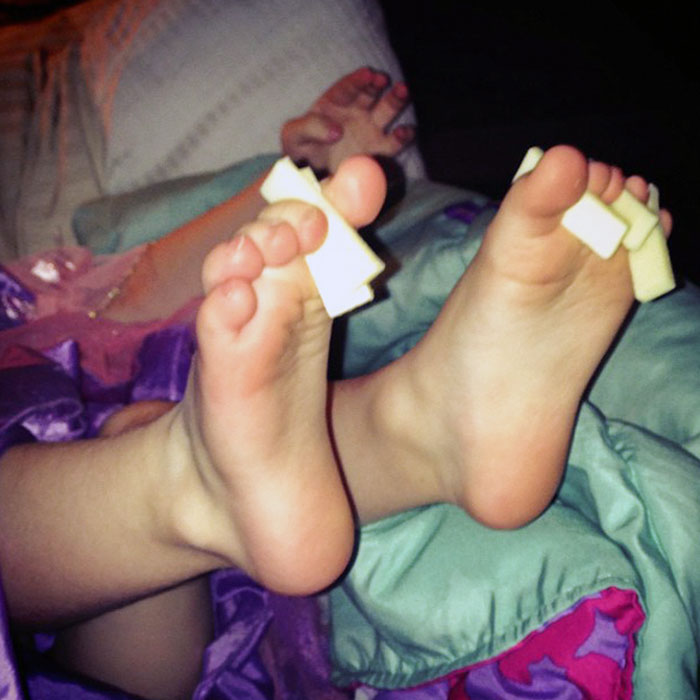
Image credits: vintagechiccreations
#67 My Son Is Starting His Summer Off Right

Image credits: hashtagf***you12
#68 My Sister And I Used To Rip The Heads Off Of Monster High Dolls And Attach The Head To Their Calves
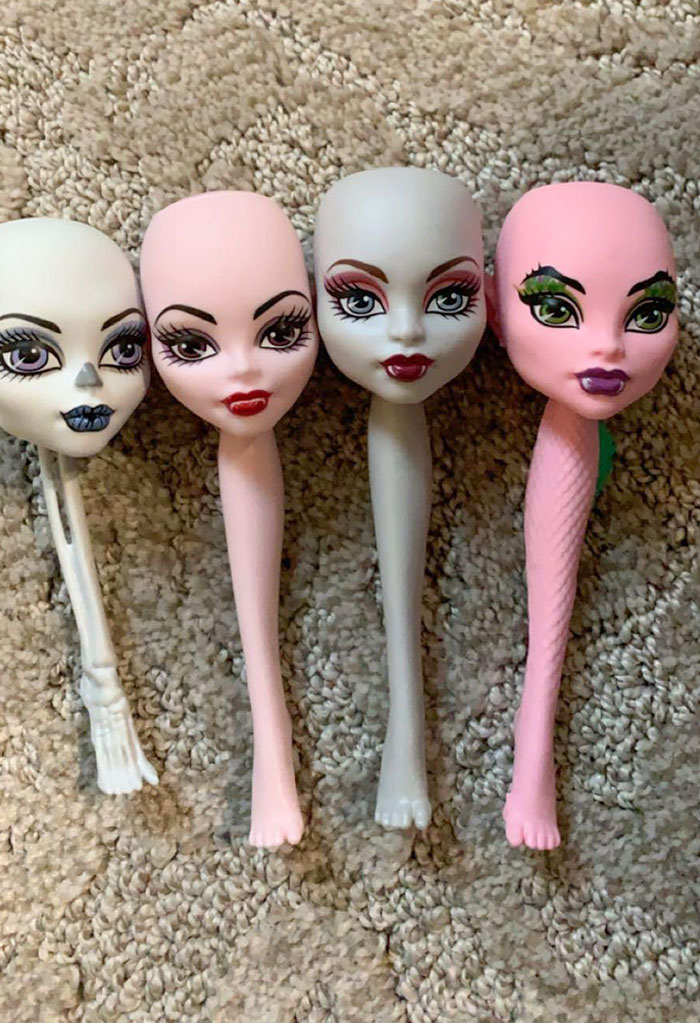
Image credits: avaanthony
#69 Came Outside To Check On My Son Who Said He Was Going To Take A Nap. I Think He’s Living His Best Life
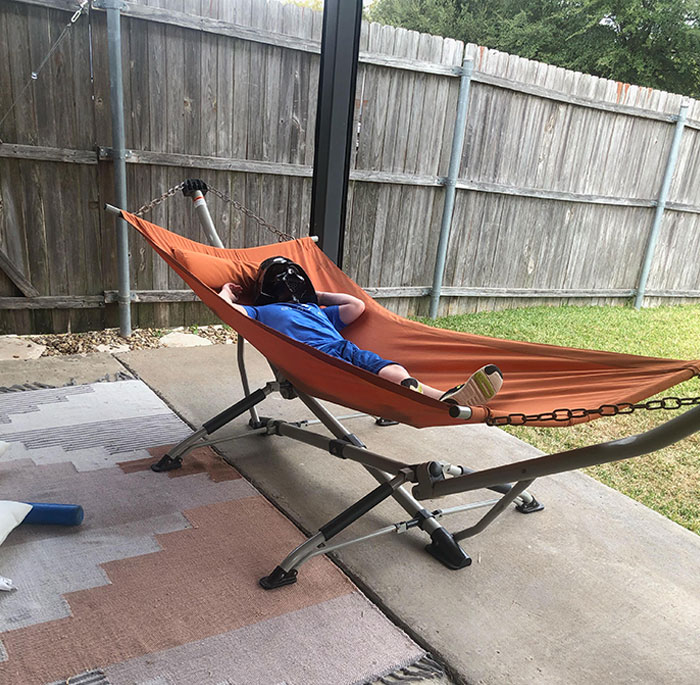
Image credits: jbearden1221
#70 I’m Helping My Mom Clean Out My Little Sister’s Room And We Found This Ball With Toys Glued To It
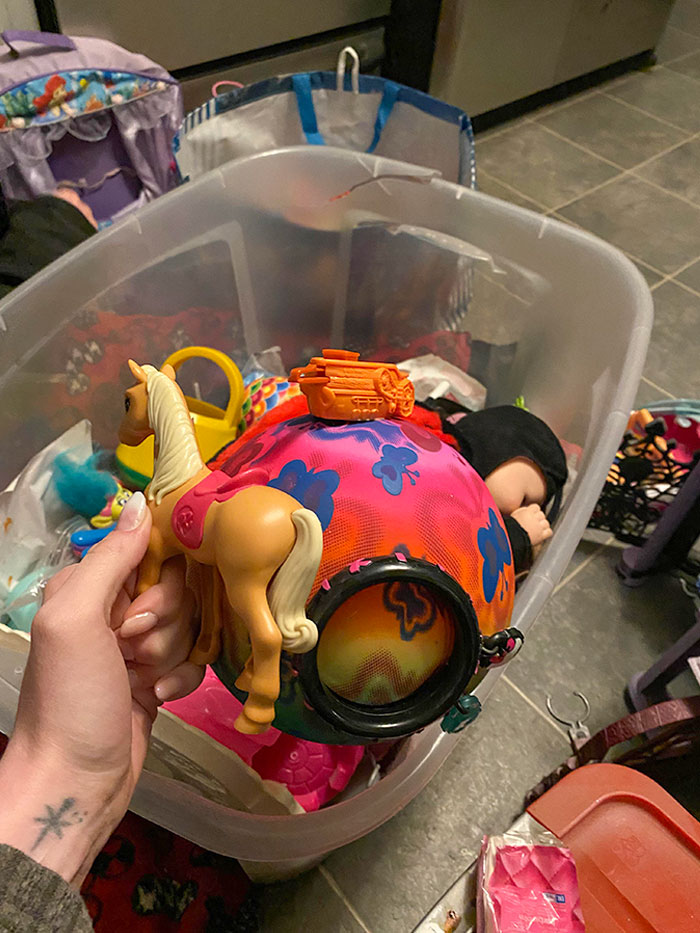
Image credits: jenikat_
#71 My Little Sister Was Complaining About Wanting To Swim But Having No Pool. I Found Her In The Backyard Like This

Image credits: B4NGLES
#72 My Daughter Is Mad Because I Won’t Open The Ranch Cup For Her. She Doesn’t Like Ranch Whatsoever

Image credits: pissfilledbottles
#73 When The Uncrustable Has Too Much “Crust” Still
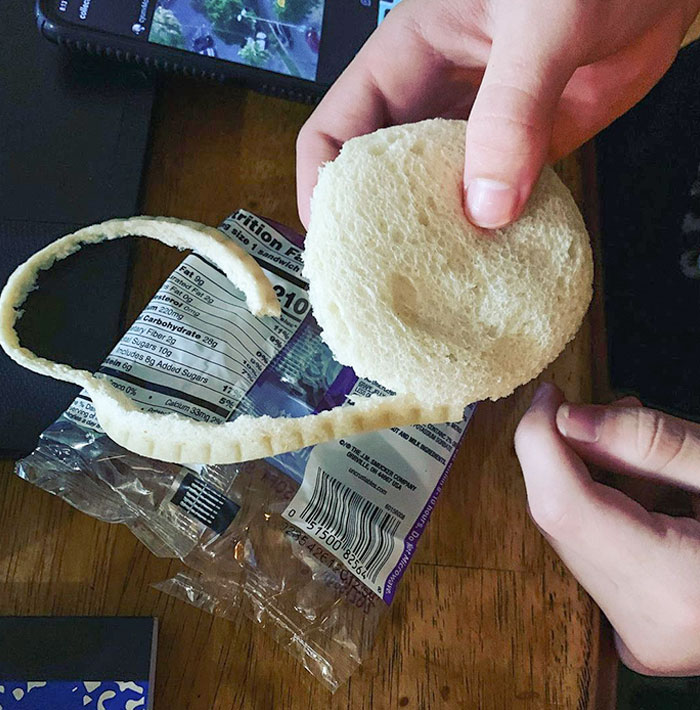
Image credits: t.coupland
#74 Took My Daughter For A Hike. She Wanted To Pack Her Own Gear. This Is What She Packed

Image credits: benglescott
#75 Starbursts

Image credits: Juanbond622
#76 My Daughter Fell Asleep With Teddy Ruxpin Still On

Image credits: CaribouofJustice
#77 Luckily He Doesn’t Have A Credit Card
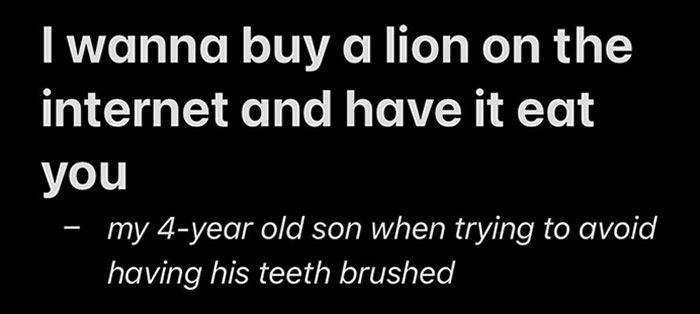
Image credits: gaucho8200
#78 Younger Son Was Trimming His Fingernails Today And Decided To Give One Of Them A Crown
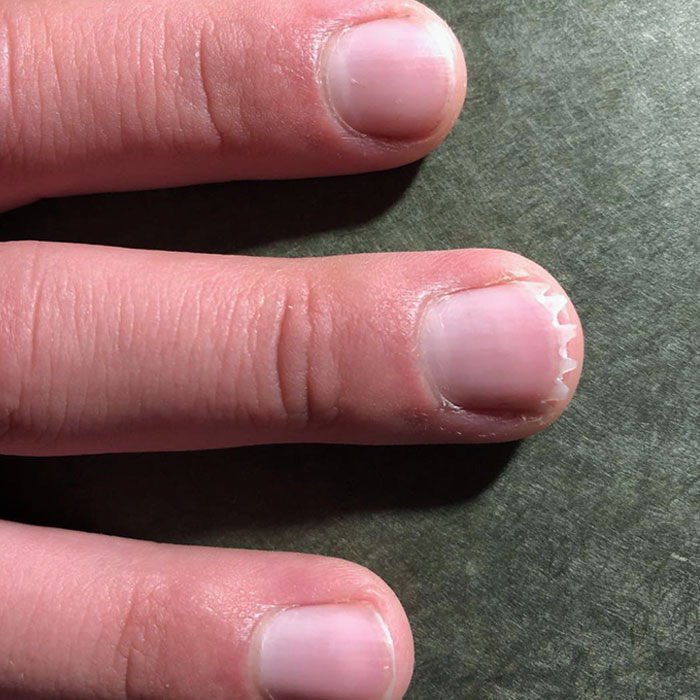
Image credits: mackidkyriec
#79 My Daughter Is Weird. Here Is A Picture Of Her Laying Under The Coffee Table While Blowing Raspberries Into A Paper Plate
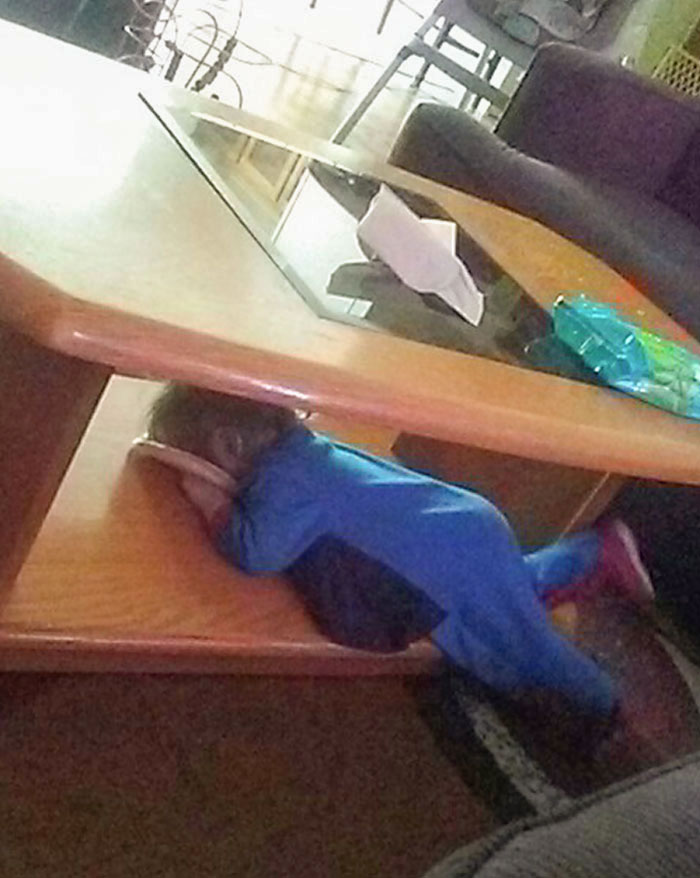
Image credits: I_am_spoons
#80 I See That Other Guys Brother And Raise My Son
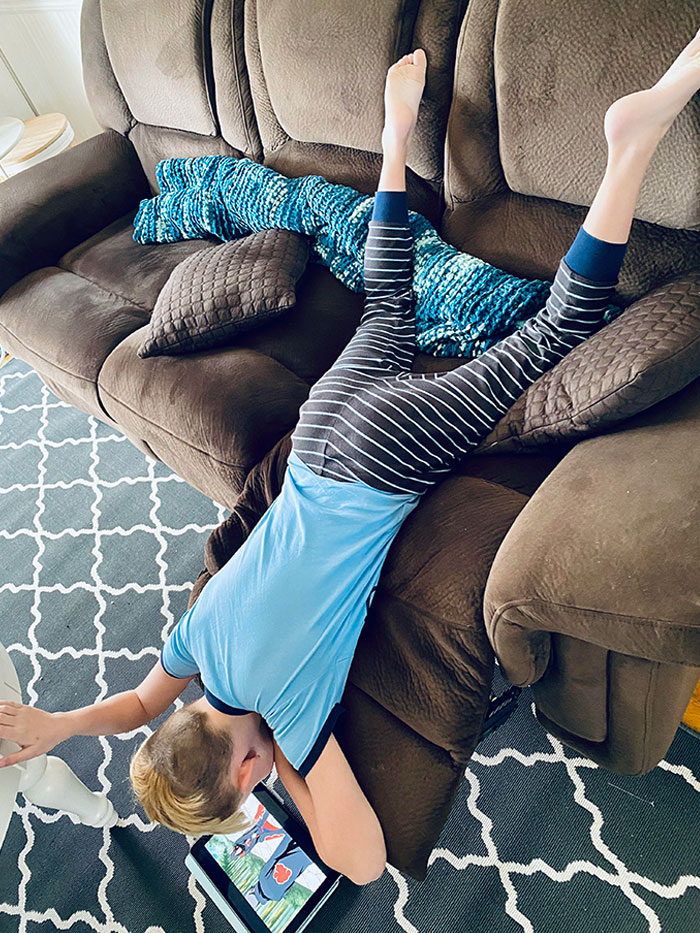
Image credits: Anusbagels
#81 Y’all. I Have No Words. My Child Is Something. Spinach And Fruit Loops. Thankfully, She Has The Best Vitamins
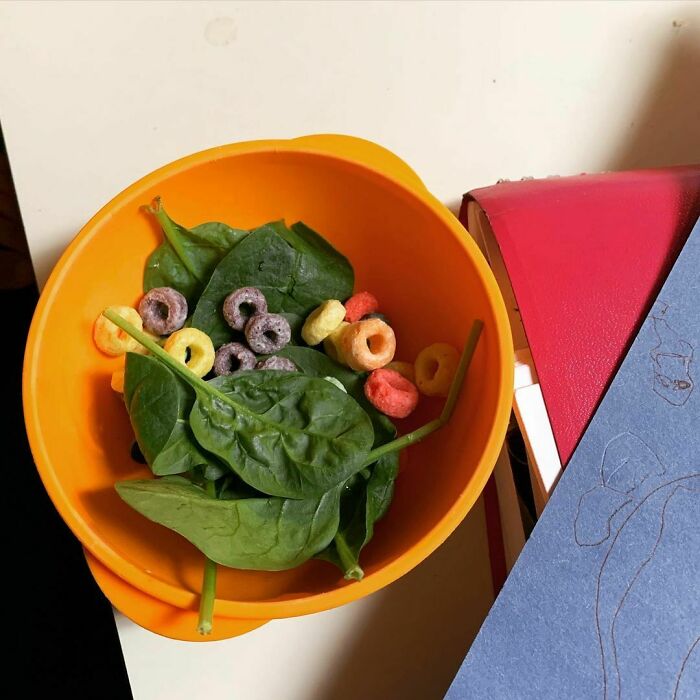
Image credits: braceybunch
#82 How Do You Get Your Toddler To Eat? We Have To Draw Creepy Renditions Of Paul Stanley On Everything Possible

Image credits: mrsbcubed
#83 Maybe He Just Isn’t Into TV
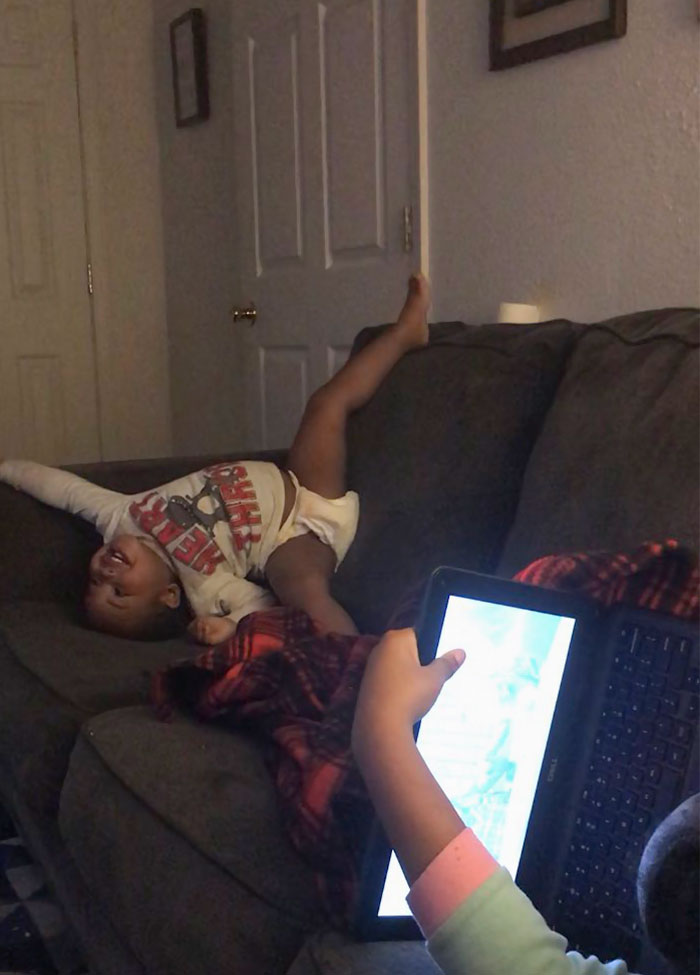
Image credits:
#84 This Is A Real Phenomenon I See
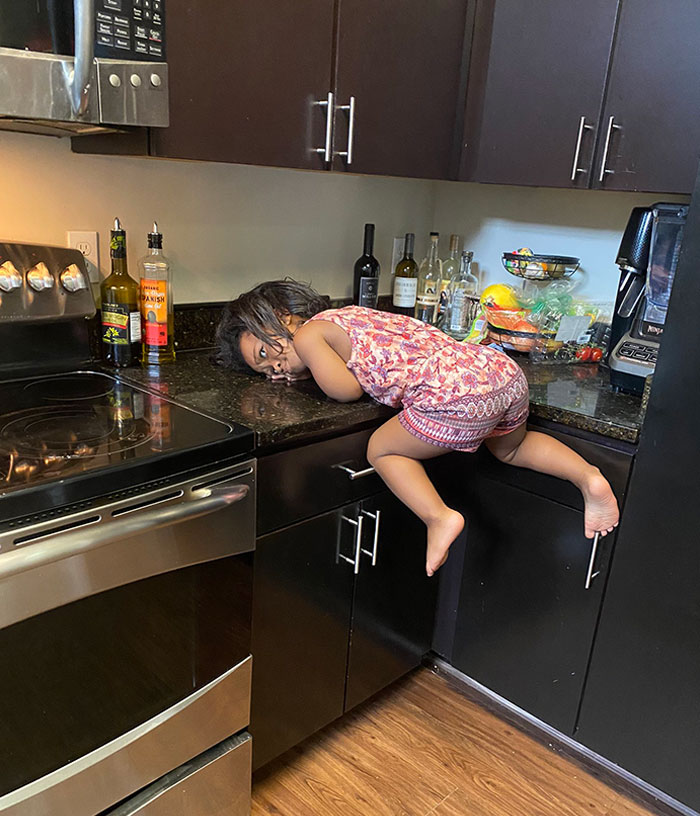
Image credits:
#85 Now He Will Surely Meet Santa
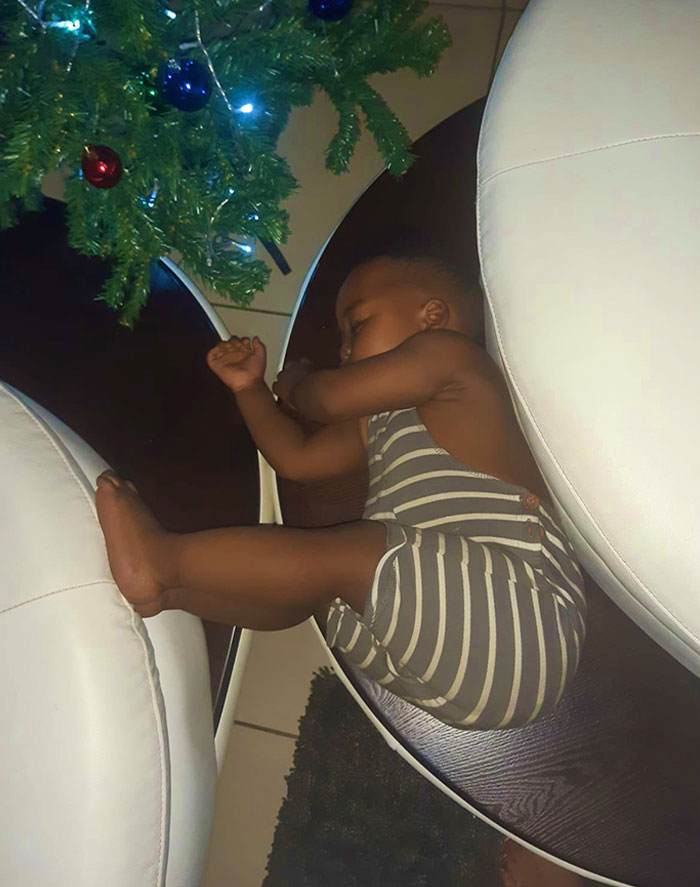
Image credits:
#86 My Grandson. Gotta Luv Them
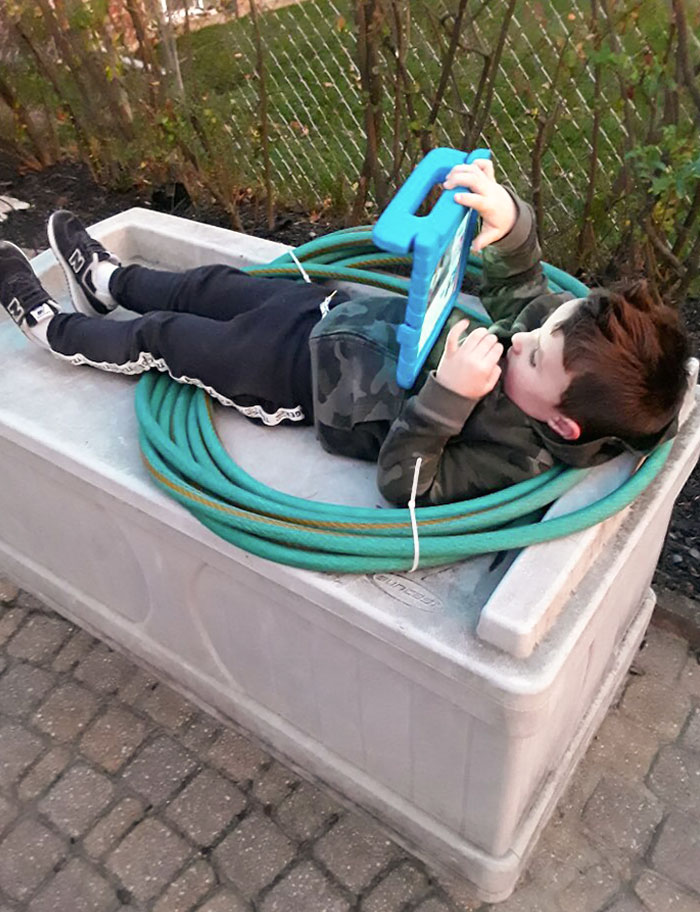
Image credits:
#87 This Looks Comfortable
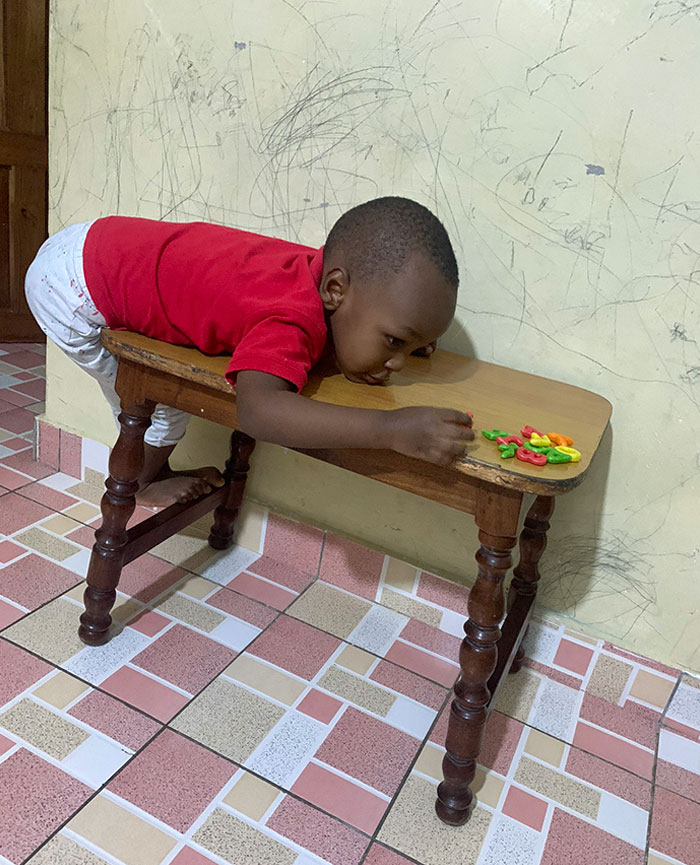
Image credits:
#88 Not Sure How I Should Feel About My Daughters Drawing Chalk Outlines Of Each Other
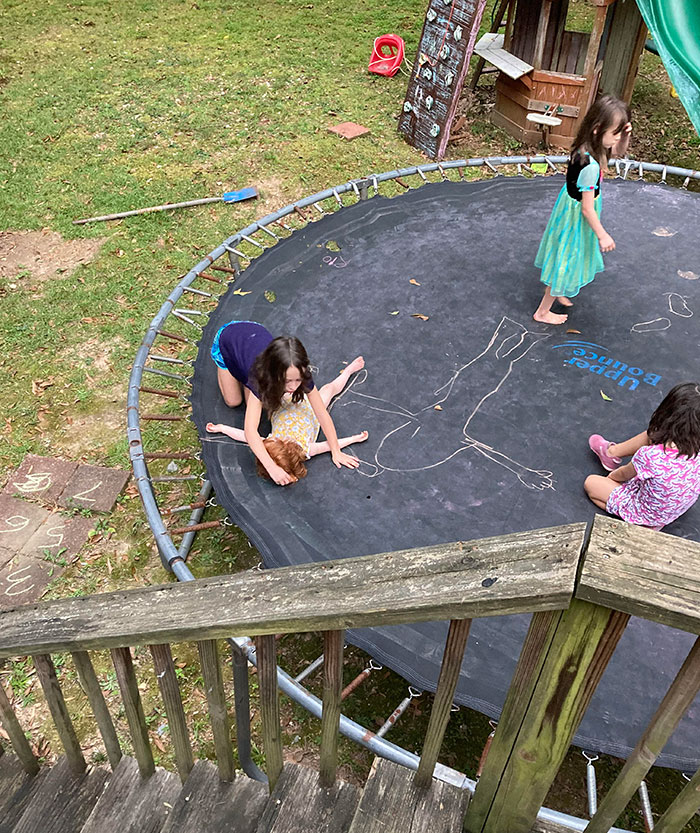
Image credits: patwig15
#89 I Found This Collection Of Heads In My Kids’ Playroom
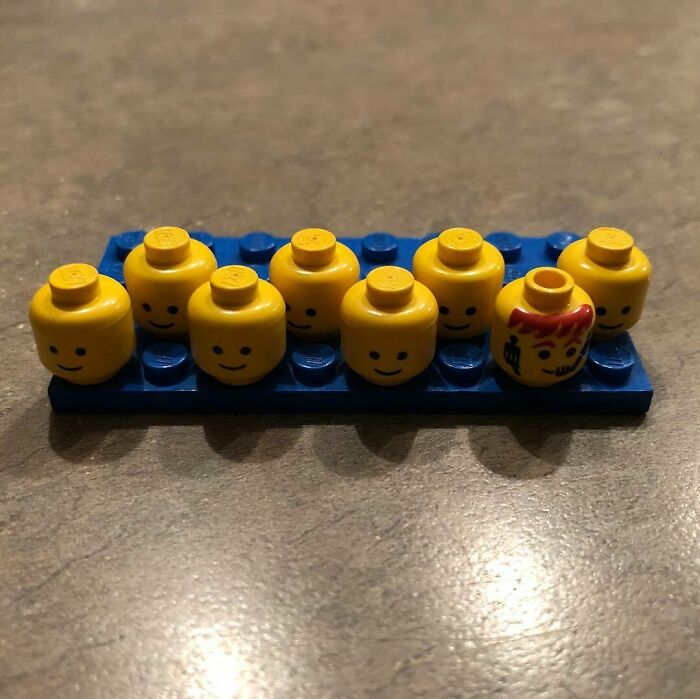
Image credits: hollywollyawesome
#90 This Child Normally Eats A Cheese Only Taco, But Tonight Opted For A Carrot Only Taco And She Ate Every Bite

Image credits: food_dork_and_mom_to_many
#91 My Christmas Card From Preschool
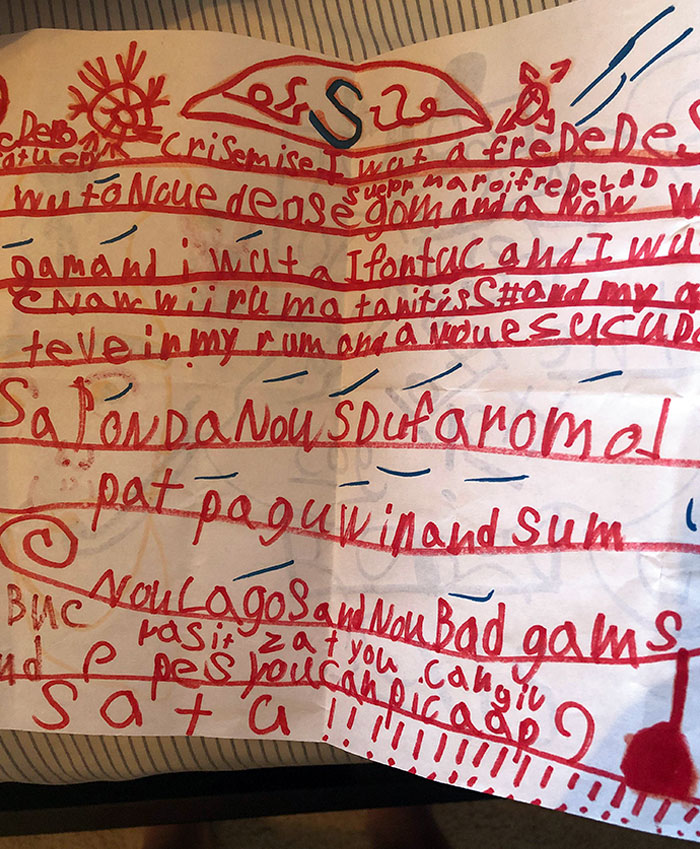
Image credits: crocetti0330
#92 What My Daughter Drew On The Back Of Her School Work. At School. Sweet Baby Jesus

Image credits: negativenancy__
#93 I Raise You My Apple Torturer

Image credits: wolvster
#94 Coming Back From The Narnia

Image credits:
#95 That Should Hurt

Image credits:
This content was originally published here.
Uncategorized
How to Help Someone Having a Panic Attack | POPSUGAR Fitness
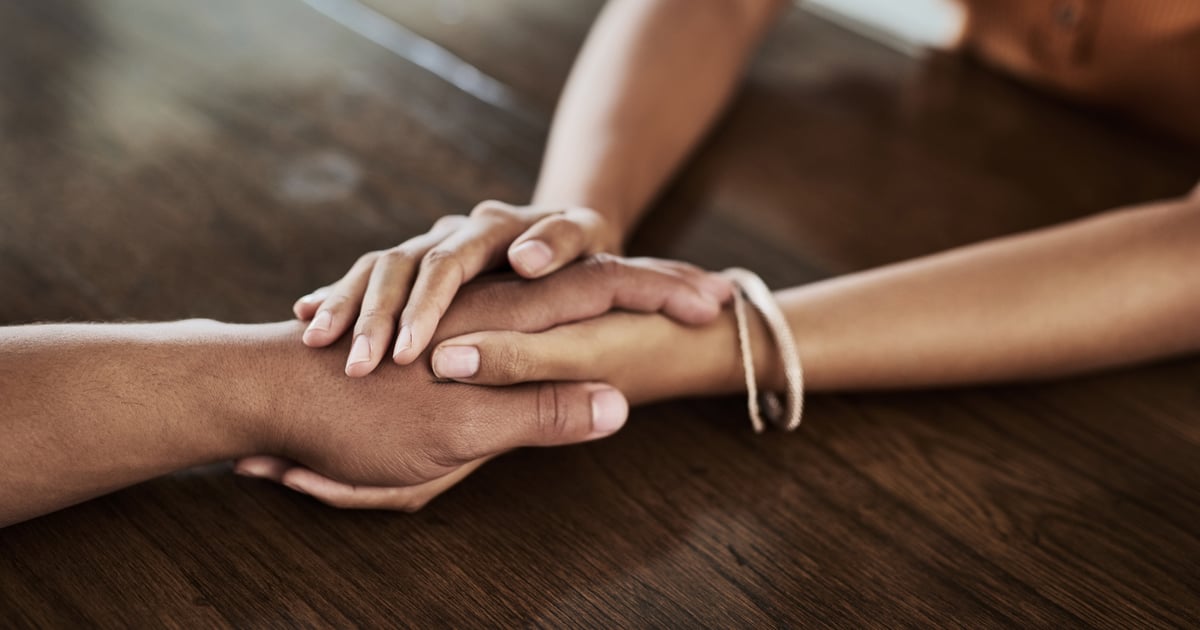
If you have a friend or family member who experiences panic attacks, it’s natural to feel overwhelmed and helpless if it happens in your presence. Like any other mental health condition, it’s impossible to truly understand what a panic attack feels like unless you’ve experienced one yourself — but that doesn’t mean you can’t help your loved one through it.
By definition, a panic attack is a “sudden episode” in which a person experiences intense fear despite not being in any sort of danger. The fear manifests itself physically, and people who experience panic attacks often feel as though they’re having a heart attack or even dying. Here are some strategies to help a loved one through it.
1. Do a Grounding Exercise Together
Doreen Marshall, PhD, licensed psychologist and vice president of mission engagement at the American Foundation For Suicide Prevention, told POPSUGAR that the first step is to help the person “ground” themself and connect to the present moment. “Since panic attacks have a beginning, middle, and end, when someone is in the moment of an attack, encourage them to use mindfulness techniques or deep breathing exercises to help reset their nervous system,” Dr. Marshall said.
You can help ground someone by getting them to focus their attention on their immediate physical surroundings. For example, Dr. Marshall recommends having the person focus on a nearby object for 10 seconds or name five objects they notice around them. “It can also help to have the person make physical contact with a nearby object, such as putting their hands on a table or a chair or running their hands under cold water to help ground them,” she said.
2. Help Them Regulate Their Breathing
A panic attack makes it difficult to breathe, which is why the person may feel like they’re having a heart attack or dying. David Rakofsky, PsyD, licensed clinical psychologist and president of Wellington Counseling Group in Chicago, told POPSUGAR the best way to help a person regulate their breathing is to breathe with them. “By the time a person is in full panic mode, their blood gasses have likely shifted from an over-abundance of oxygen, which can fuel the accelerating state of the panic,” Dr. Rakofsky explained. “By regulating breath, you start to reverse this cycle.”
Dr. Rakofsky recommends the “times two” rule, which means that for every second you breathe air in, you double it on the way out. “Always keep in mind [that] a person in panic or in a heightened state of anxiety will not be able to take in a lot of air since there is a feeling of constriction in the chest,” he said. For this reason, Dr. Rakofsky says to start small and then work your way up to taking longer, deeper breaths together.
3. Know What Not to Say
“Avoid phrases that could provoke more panic and come off as dismissive, shaming, or blaming,” Dr. Marshall said. For example, you shouldn’t tell someone who’s experiencing a panic attack to calm down. Instead, use phrasing that shows you’re focused on listening to the person and helping them get through the panic attack, like “I’m here with you,” “Concentrate on your breathing,” or “Stay in the present.”
Dr. Rakofsky also emphasized the importance of never telling a person that the panic attack is all in their head. “The feeling of invalidation and psychological invisibility that comes with being told this is absolutely crushing and likely to bring about a greater state of panic and distress,” Dr. Rakofsky told POPSUGAR, noting that it also increases distrust and a lack of hope that they’ll find real, helpful treatment for their panic attacks.
“Once the panic attack is over, then you can help them address what may have contributed to the panic attack and seek professional help,” Dr. Marshall said.
4. Encourage Them to Seek Professional Help
If a person has panic attacks and isn’t receiving mental health treatment from a therapist and psychiatrist, encourage them to seek help from a professional who has experience treating panic and anxiety disorders. “Connecting with a mental health professional can help someone who experiences a panic attack or attacks have access to a resource who can help determine what’s happening in the moment as well as manage episodes over time,” Dr. Marshall said.
This content was originally published here.
Uncategorized
Regular exercise offers stronger mental health benefits than cardiorespiratory fitness, study finds
A Swedish study published in Mental Health and Physical Activity has shed light on the well-known link between exercise and mental health. The researchers found that, when accounting for sedentary behavior, cardiorespiratory fitness does not appear to improve anxiety and depressive symptoms, while frequency of exercise does.
The link between exercise and mental health has been well-documented, and yet findings are limited when it comes to the type of physical activity that is most beneficial. The literature has yet to establish the relative importance of the frequency, intensity, and duration of exercise. As study authors Mats Hallgren and his team say, it is also unclear how cardiorespiratory fitness (CRF) relates to mental health.
CRF refers to the strength of the body’s circulatory and respiratory response to physical activity, and it tends to improve with regular exercise. In their study, Hallgren and his team set out to disentangle the relative importance of CRF and exercise frequency in the prevention of mental health symptoms. As the researchers say, filling in these gaps in research can help improve the design of exercise-based prevention strategies for mental health.
The researchers analyzed data from a general health assessment that was administered to a large number of Swedish employees. The sample was made up of 36,595 middle-aged men and women with an average age of 41. The questionnaires asked respondents how many times a week they had exercised in the past 30 days and how often they had experienced “worry, depressed mood or anxiety.” They also completed a test of cardiorespiratory fitness on a stationary bicycle and were then classified as either low, medium or high CRF.
First, the researchers found evidence that more frequent exercise was linked to improved mental health. Respondents who reported exercising at least 1-2 times a week were less likely to report symptoms of depression and anxiety, even after accounting for sedentary behavior — which was measured as the amount of leisure time participants reported spending sitting still.
As the researchers explain, sedentary behavior appears to play an important role in the link between exercise and mental health. Another study led by Hallgren found evidence that passive sedentary behaviors, such as TV-watching, increase depressive symptoms while mentally-active sedentary behaviors may actually prevent them.
Interestingly, cardiorespiratory fitness appeared to be less important when it came to the prevention of mental health symptoms. While respondents in the medium and high CRF groups reported fewer symptoms of depression and anxiety, this effect disappeared when sedentary behavior was taken into account.
“Taken together,” Hallgren and colleagues report, “this suggests that high CRF may not be necessary to prevent common mental health symptoms. Instead, regular participation in a preferred form of structured exercise may be of greater relative importance.”
The researchers discuss the possibility that the impact of cardiorespiratory fitness may only be relevant when comparing people with very low CRF levels to those with higher levels. Previous research suggests that CRF appears to be most beneficial to somatic health when looking at improvements among those with low fitness levels. It could be that the current study’s sample, which was made up exclusively of employed persons, did not include enough people with low fitness levels to capture such an effect.
A substantial limitation was that symptoms of depression and anxiety were measured using a single item, and the researchers stress that this measure does not reflect a diagnosis of depression or anxiety. Moreover, symptoms of anxiety and symptoms of depression are distinct and would be better assessed separately in future studies.
The researchers conclude that regular exercise may be enough to lower anxiety and depressive symptoms among most people, while it may be useful to encourage exercises that boost CRF among people with particularly low levels of fitness.
The study, “Associations of exercise frequency and cardiorespiratory fitness with symptoms of depression and anxiety – a cross-sectional study of 36,595 adults”, was authored by Mats Hallgren, Aaron Kandola, Brendon Stubbs, Thi-Thuy-Dung Nguyen, Peter Wallin, Gunnar Andersson, and Elin Ekblom-Bak.
(Image by from Pixabay)
This content was originally published here.









